Designing a small dressing room requires strategic planning and creativity to combine functionality and style in a limited footprint. From clever storage solutions and multi-purpose furniture to lighting tricks and decorative accents, there are countless ways to transform a compact space into a luxurious wardrobe haven. In this article, we explore twenty innovative ideas—each adaptable to various budgets and design preferences—that maximize storage, optimize layout, and enhance daily routines. Whether you’re working with a narrow alcove, a converted closet, or a tiny corner of a bedroom, these practical tips and stylish inspirations will help you craft a dressing room that feels spacious, organized, and utterly glamorous. Let’s dive into the possibilities and discover how to make the most of every square inch.
1. Maximize Vertical Storage
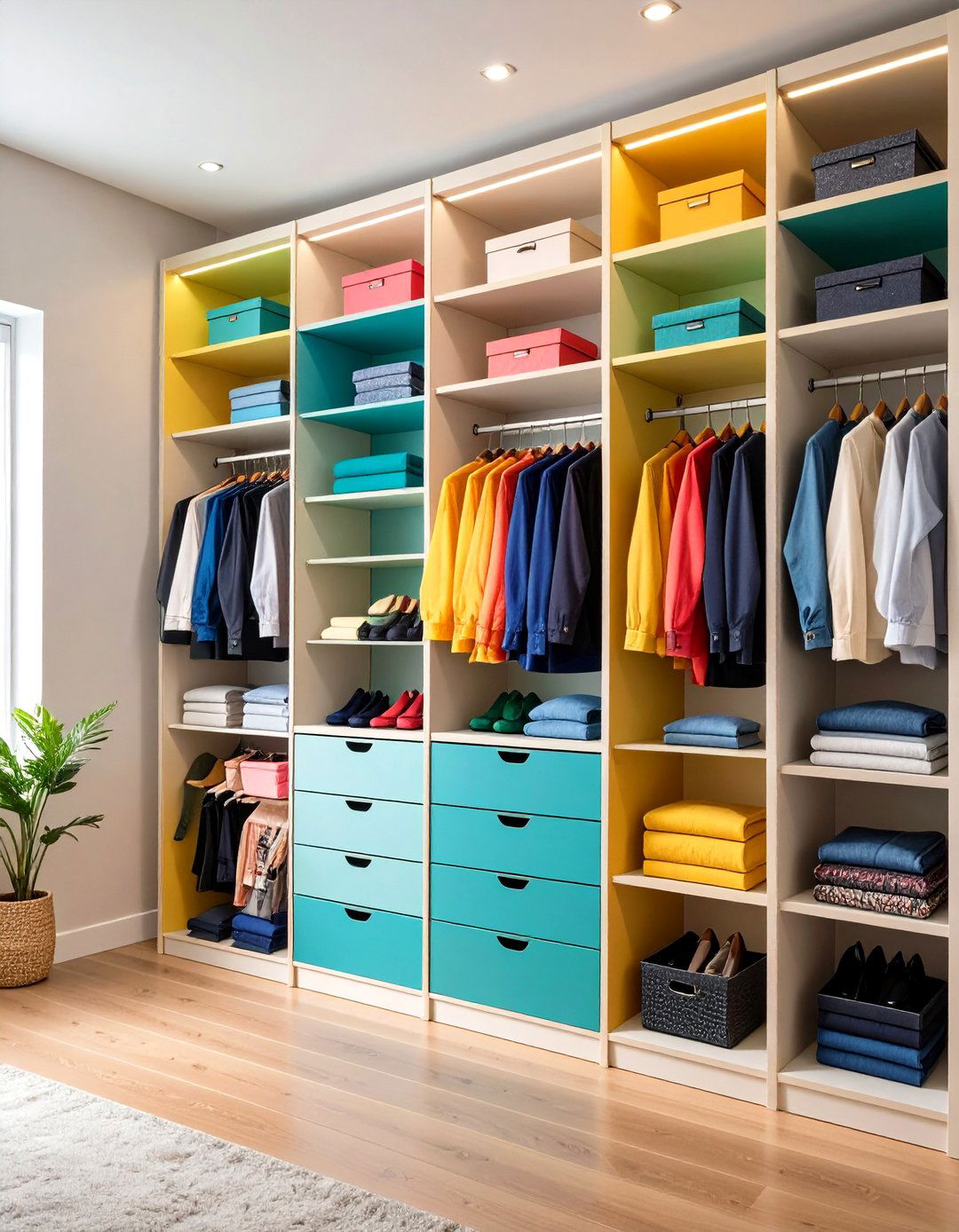
One of the most effective strategies for small dressing rooms is to utilize vertical space by installing floor-to-ceiling shelving units and tall cabinetry. Extending storage all the way to the ceiling takes advantage of underused areas and creates additional room for items like off-season clothing, accessories, and storage bins. Designers recommend pairing open shelves with enclosed compartments to maintain visual balance and reduce clutter. Incorporating adjustable shelves allows for flexibility in shelf height, accommodating boots, handbags, and folded linens. Adding strategically placed lighting between shelves can highlight displayed pieces and make items easier to locate. By thinking upward, you can significantly increase storage capacity without encroaching on valuable floor space.
2. Perform a Closet Audit
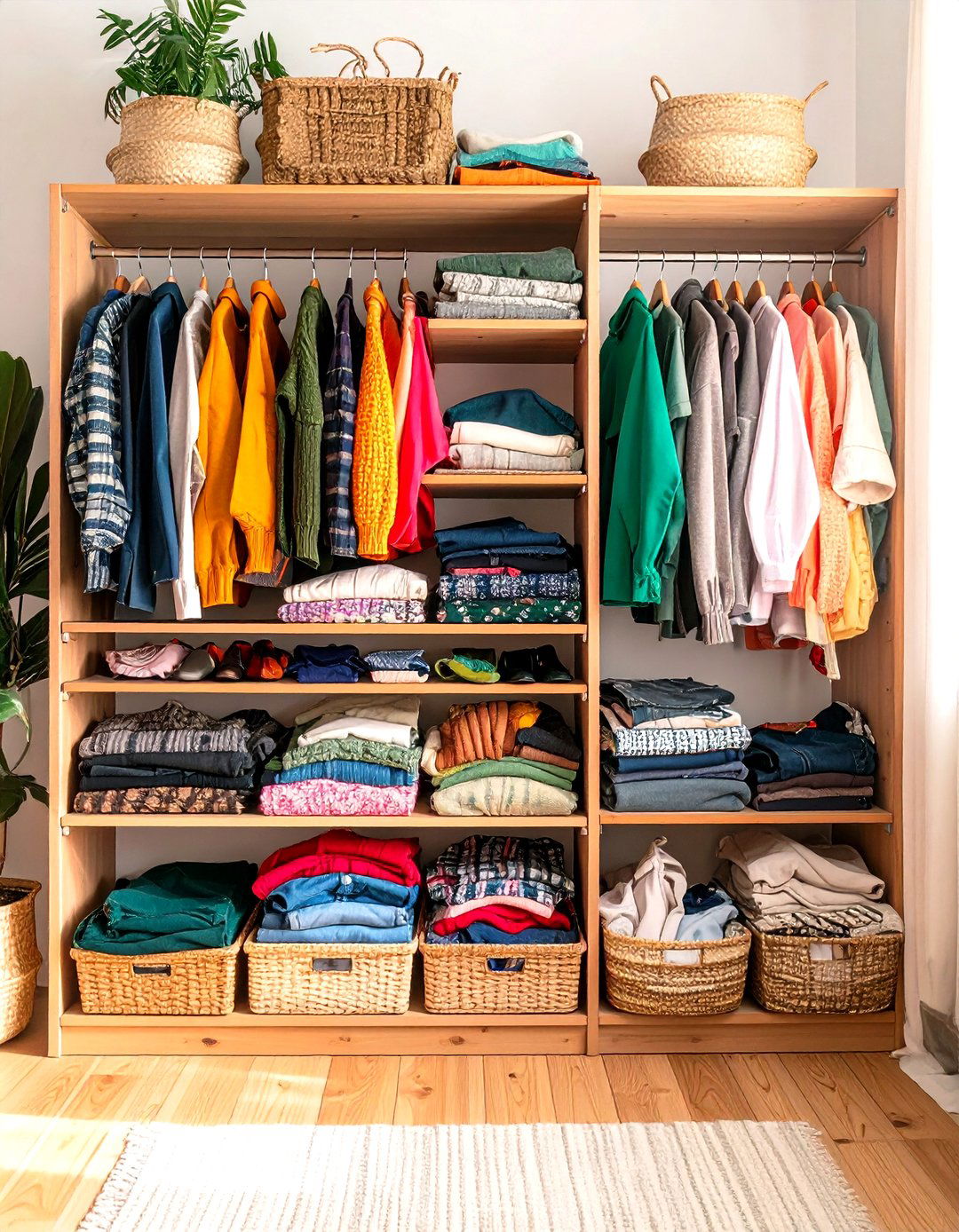
Before embarking on a dressing room makeover, cleanse and organize your existing wardrobe to determine storage needs and eliminate superfluous items. A thorough closet audit involves sorting clothing and accessories into categories—keep, donate, and store—helping you create an inventory of what requires dedicated space. Houzz experts emphasize that emptying and cleaning the area reveals hidden opportunities for layout improvements and accurate measurement of available space. By understanding your volume of garments, shoes, and seasonal items, you can tailor shelving, rods, and drawers to your actual requirements. This preparatory step not only streamlines the design process but also ensures that every storage solution you install is appropriately sized and utilized.
3. Opt for Sliding or Pocket Doors
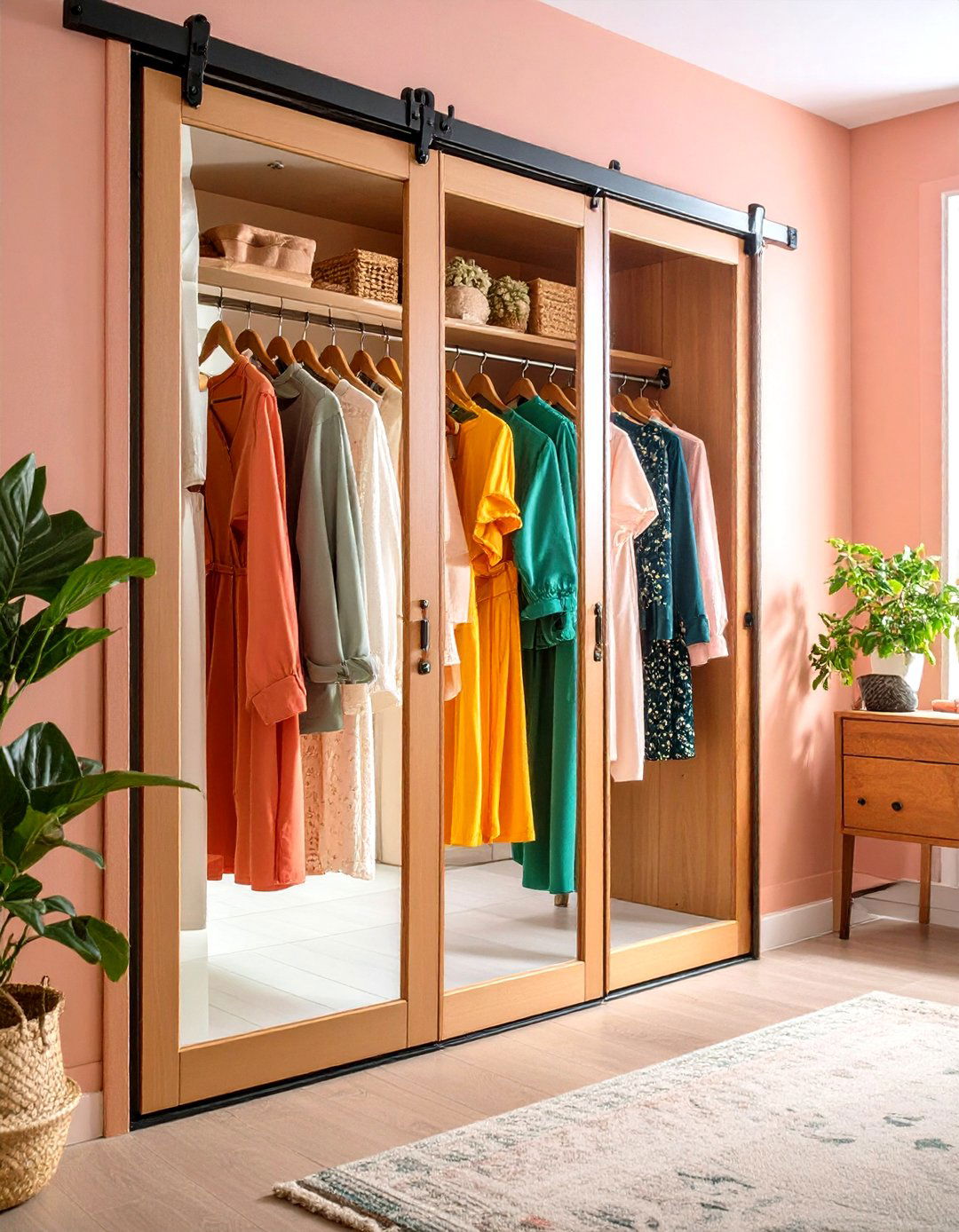
Traditional hinged doors can consume precious square footage in a small dressing room, so swapping them out for sliding doors or pocket doors presents a space-saving alternative. Sliding barn-style or pocket doors slide neatly out of the way, eliminating swing radius and enabling seamless flow between the dressing area and adjacent rooms. House Beautiful suggests choosing doors with mirrored or frosted glass inserts to reflect light and visually widen the space. Moreover, custom sliding panels can be tailored to match existing decor, from sleek modern metal tracks to rustic wooden planks. By minimizing door clearance requirements, you free up wall segments for additional hooks, shelving, or decorative treatments.
4. Incorporate Built-In Shelving
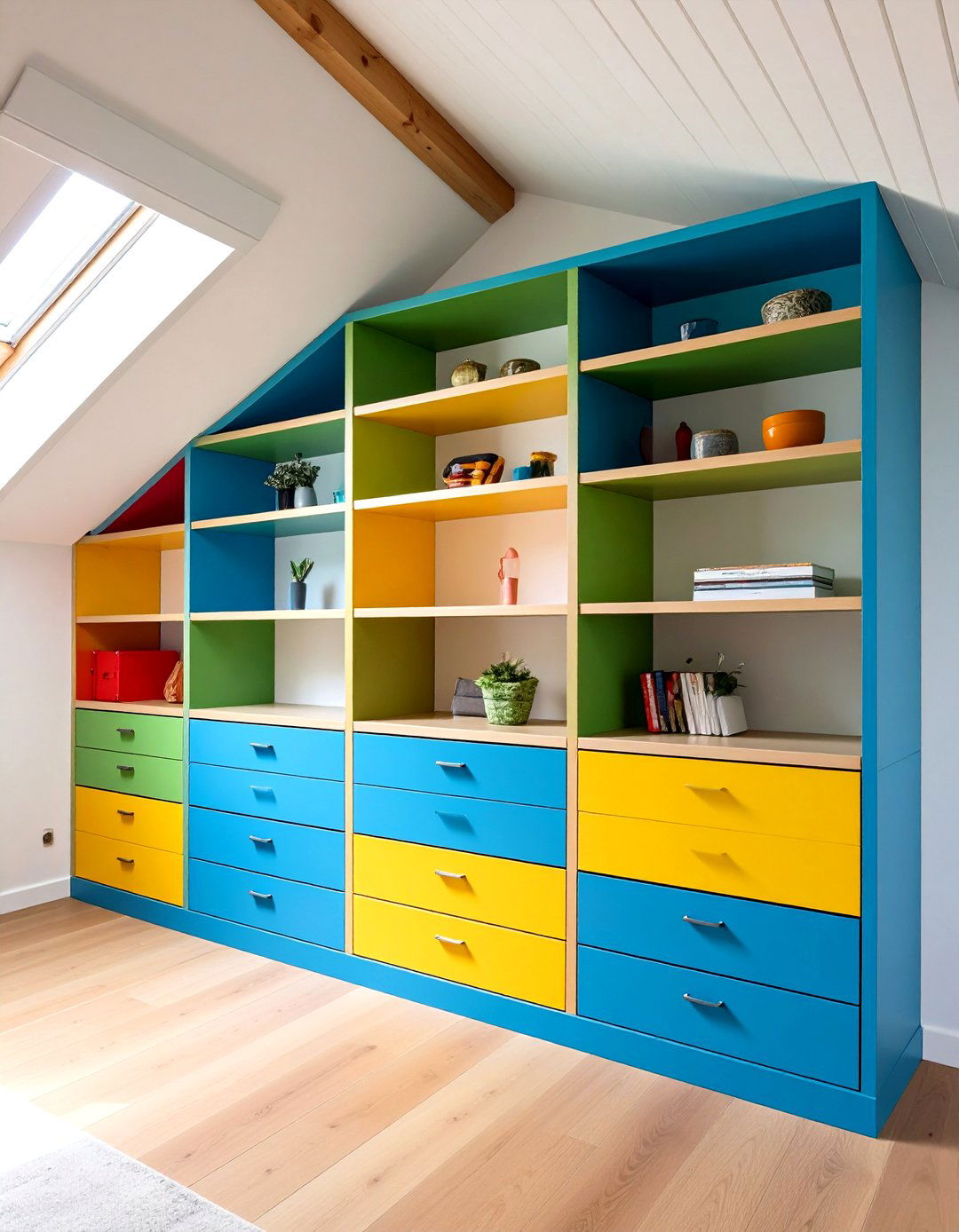
Built-in shelving contributes a polished, cohesive look while maximizing every inch of wall space in a small dressing room. Custom millwork can be designed to fit under sloped ceilings, around windows, and above doors where standalone furniture would not. Better Homes & Gardens recommends integrating cubbies, open shelves, and closed drawers in a single continuous unit to accommodate a variety of storage needs. The Spruce further advises lining shelf interiors with LED strip lighting to accentuate accessories and make items easier to identify at a glance. With built-in solutions, you eliminate gaps between furniture and walls, reducing dust accumulation and creating a tailored, high-end appearance.
5. Install a Compact Vanity
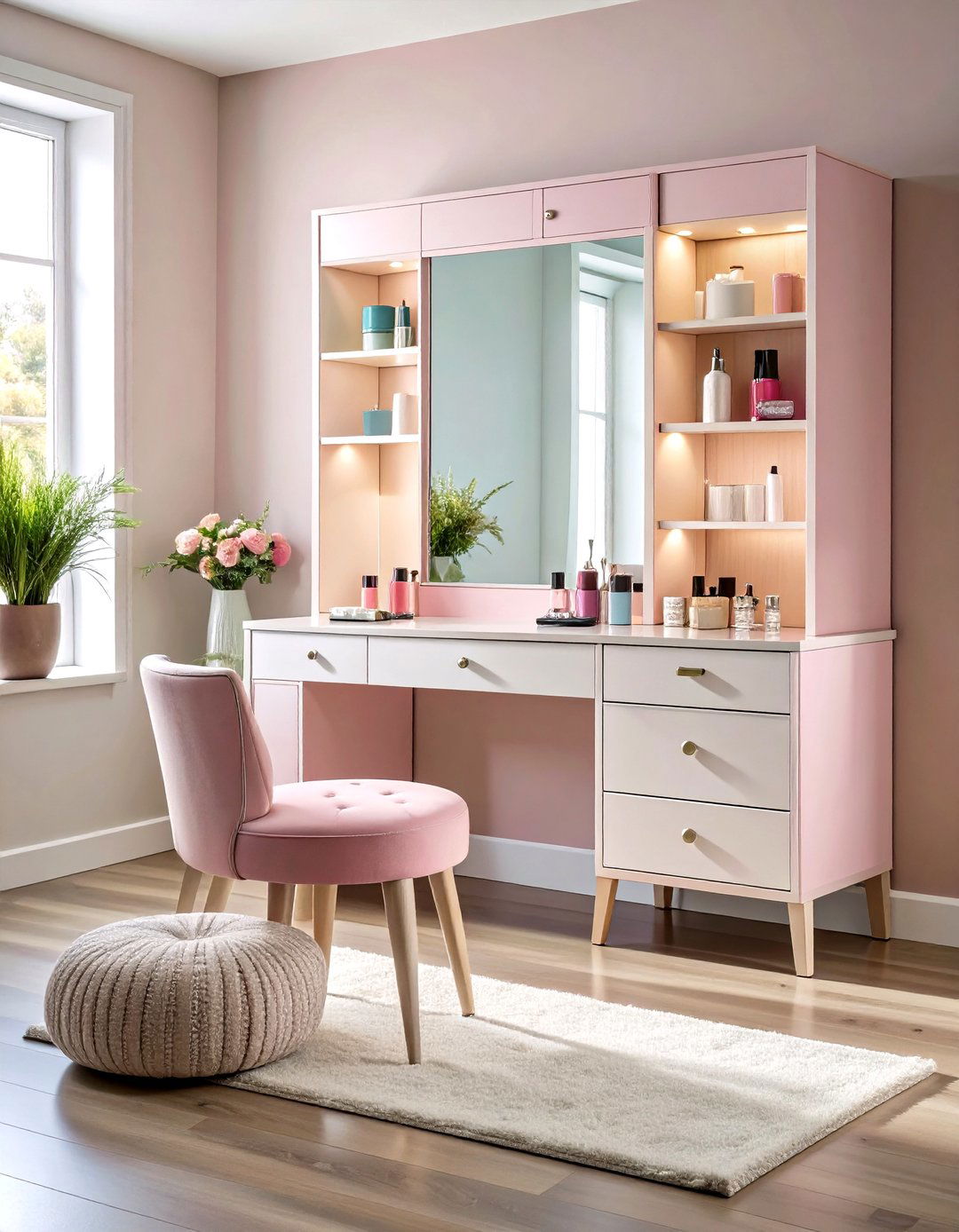
Even in the smallest dressing rooms, a compact vanity can serve as a multifunctional focal point for makeup application, jewelry storage, and garment prep. The Spruce highlights vanities with fold-down work surfaces that extend when needed and retract when not in use. Real Homes recommends positioning a petite table or wall-mounted desk under a window to harness natural light for grooming tasks. Opt for models with integrated drawers or small cubbies to keep cosmetics, brushes, and accessories neatly organized and out of sight. Pairing the vanity with a slim side stool or cushioned bench maintains seating comfort without compromising walkway clearance.
6. Add Full-Length Mirrors
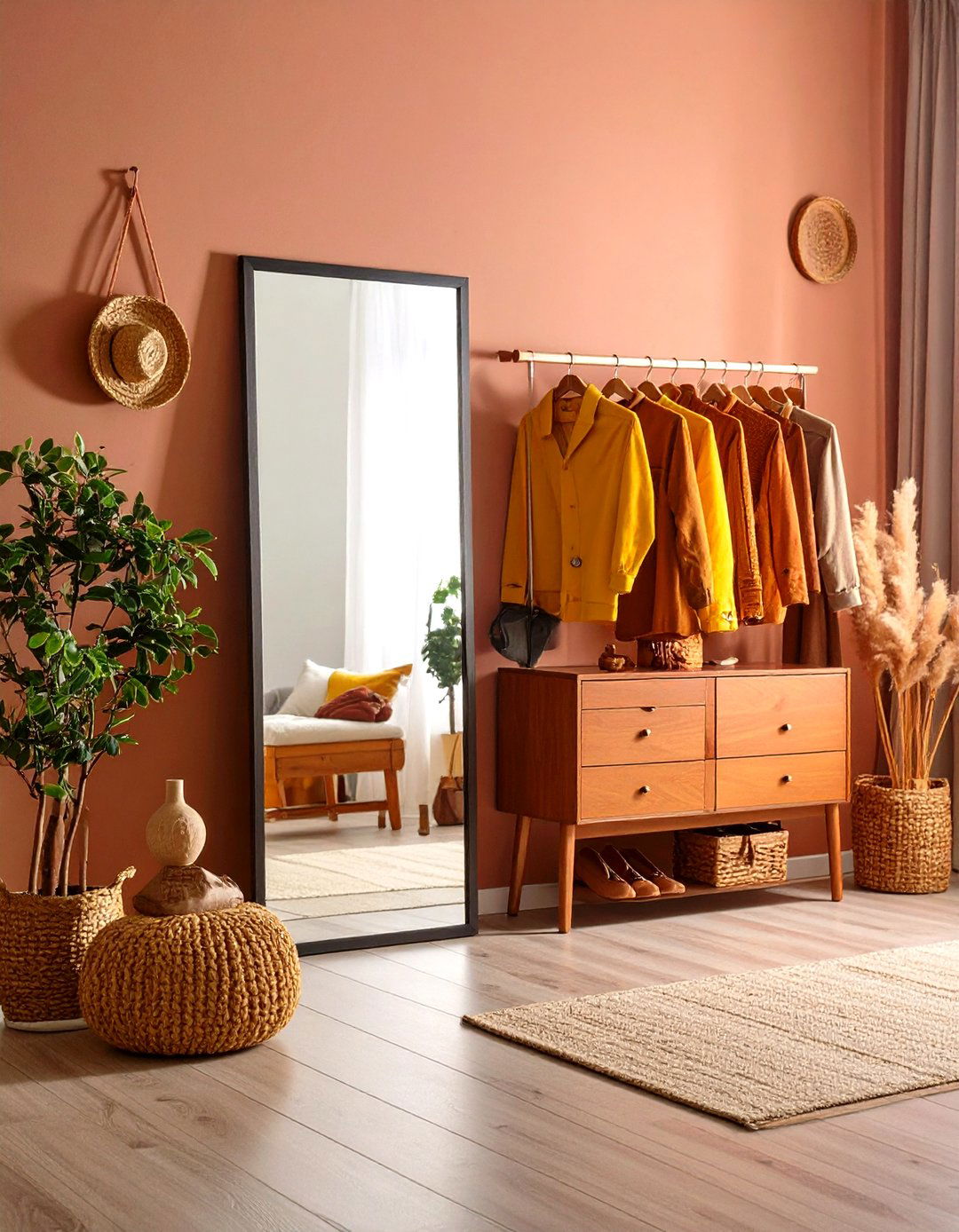
A full-length mirror is essential in a dressing room, serving both functional and aesthetic purposes by facilitating outfit previews and amplifying perceived space. The Spruce suggests installing mirrored cabinet doors or sliding mirror panels to double storage functionality and coverage. By reflecting natural and artificial light, mirrors visually expand the dressing area and brighten darker corners. Mounting a mirror on the back of the door or on a free-standing swivel frame also preserves wall real estate for hooks or shelving. To enhance the decorative impact, choose a statement frame—such as a gilded antique or sleek geometric design—that complements the room’s style.
7. Utilize Corner Spaces
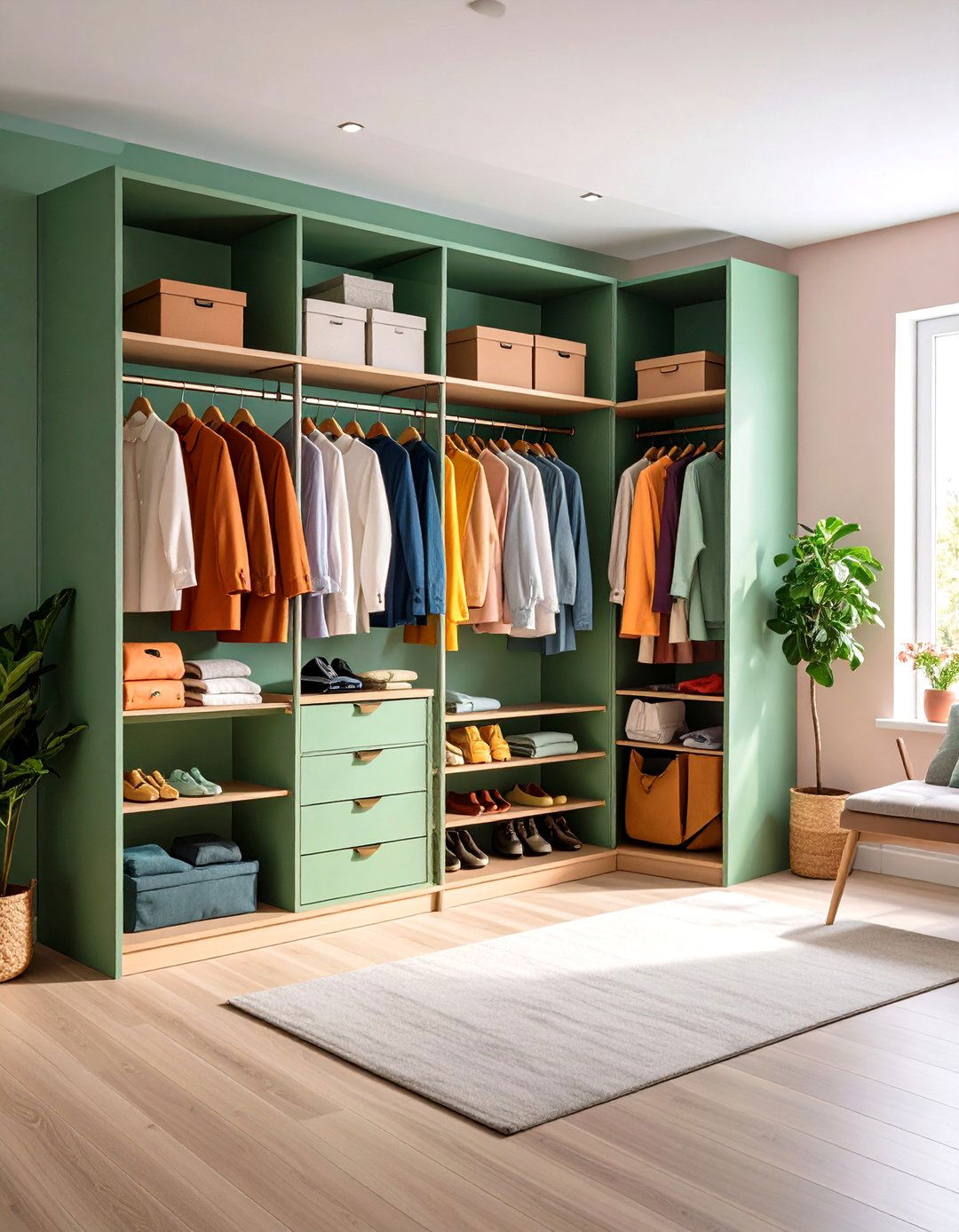
Corner spaces often remain underutilized in small dressing rooms, but they can house unique storage configurations like rotating carousels, corner shelving, and angled hanging rods. HGTV experts recommend a lazy Susan-style rotating rack for accessories, allowing easy access without requiring additional width. Corner shelves can display handbags or folded sweaters, keeping them visible yet out of the way. Alternatively, angled rods fitted between walls can create a seamless garment corner without awkward gaps. Incorporating custom corner drawers or shoe racks further capitalizes on this challenging area, transforming every nook into a functional storage zone.
8. Choose Multi-Functional Furniture
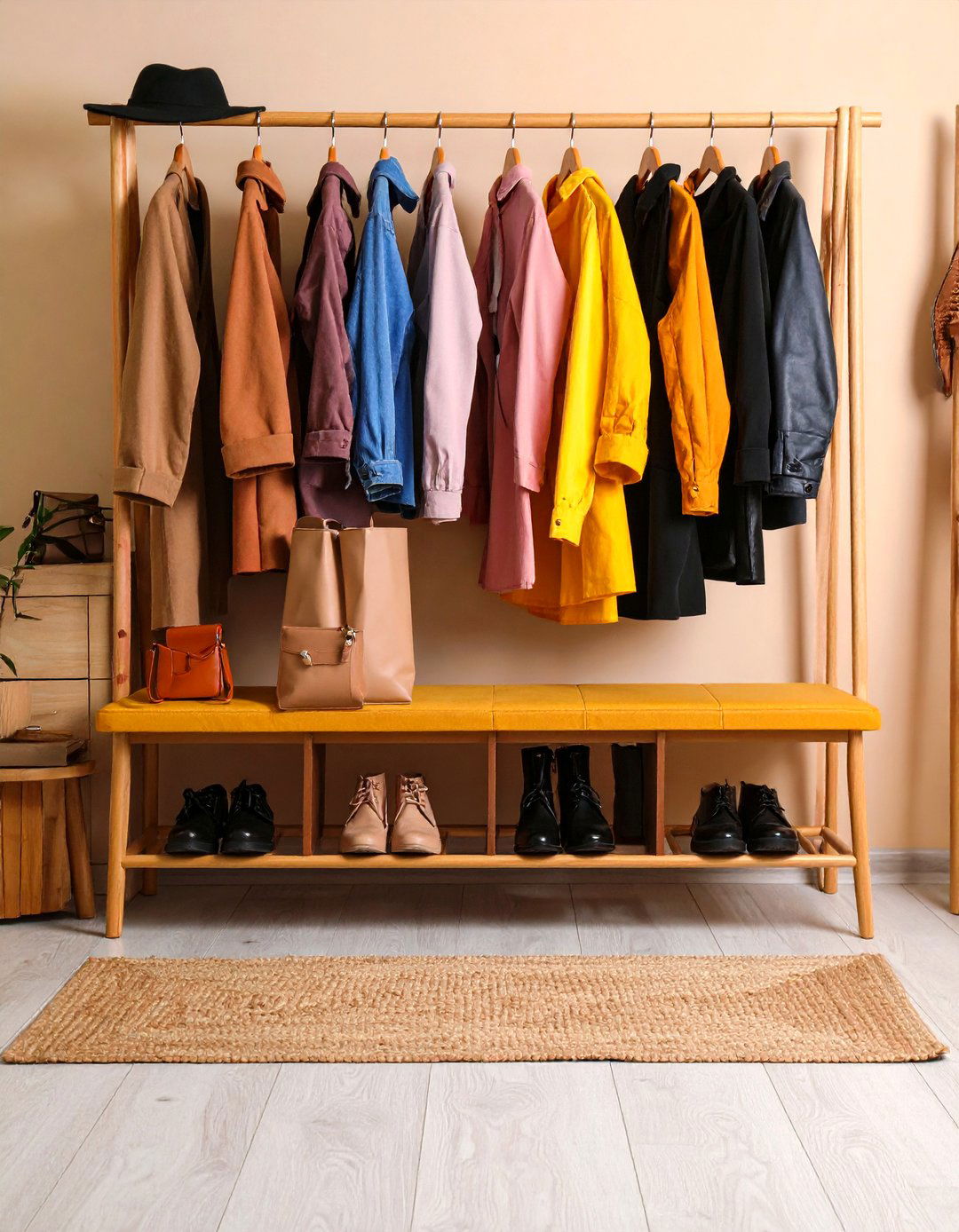
In small dressing rooms, each furniture piece should ideally serve multiple purposes—such as an ottoman with hidden storage or a bench that doubles as a shoe rack. The Spruce recommends ottomans and benches with lift-up tops to stow scarves, belts, and other accessories. A mirror-topped chest can function simultaneously as a dressing surface and drawer unit. Collapsible or nesting furniture offers temporary seating or table space for tasks like shoeshine or jewelry sorting, then tucks away when not needed. By carefully selecting versatile pieces, you minimize clutter and maximize functionality without sacrificing style.
9. Implement Custom Closet Systems
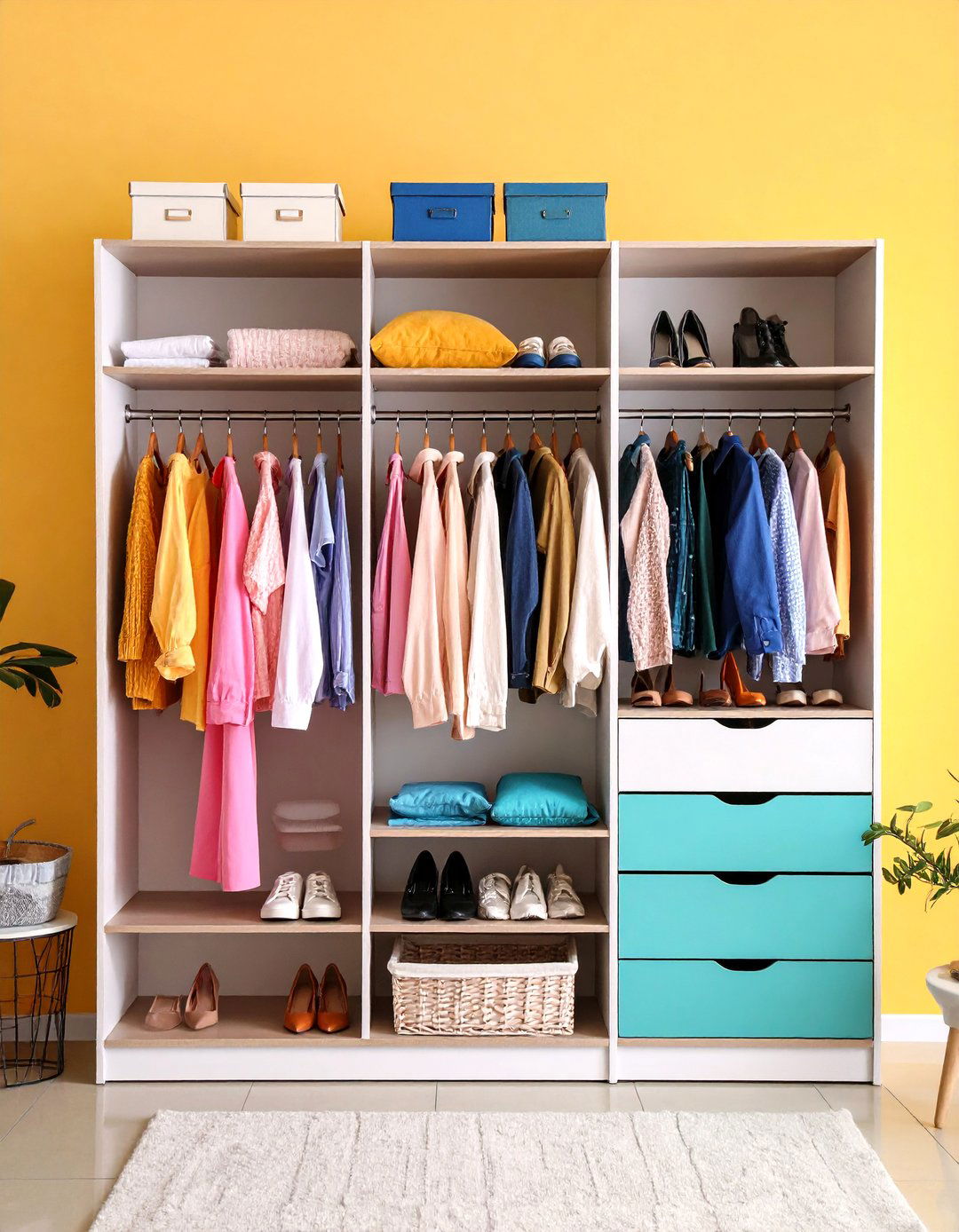
Custom closet systems provide tailored storage solutions designed around your specific wardrobe requirements and room dimensions. Better Homes & Gardens notes that modular closet kits offer a middle ground between off-the-shelf shelving and fully bespoke millwork, allowing homeowners to adjust configurations as needs evolve. Professional closet designers can integrate drawers, pull-out trays, jewelry stations, and specialized shoe cubbies within a unified framework. Matching finishes and hardware across all components yields a cohesive aesthetic that elevates the overall space. Whether you choose a luxury brand or a more budget-friendly assembly, custom systems ensure that every inch is optimized for organization.
10. Light Color Palettes to Enhance Space
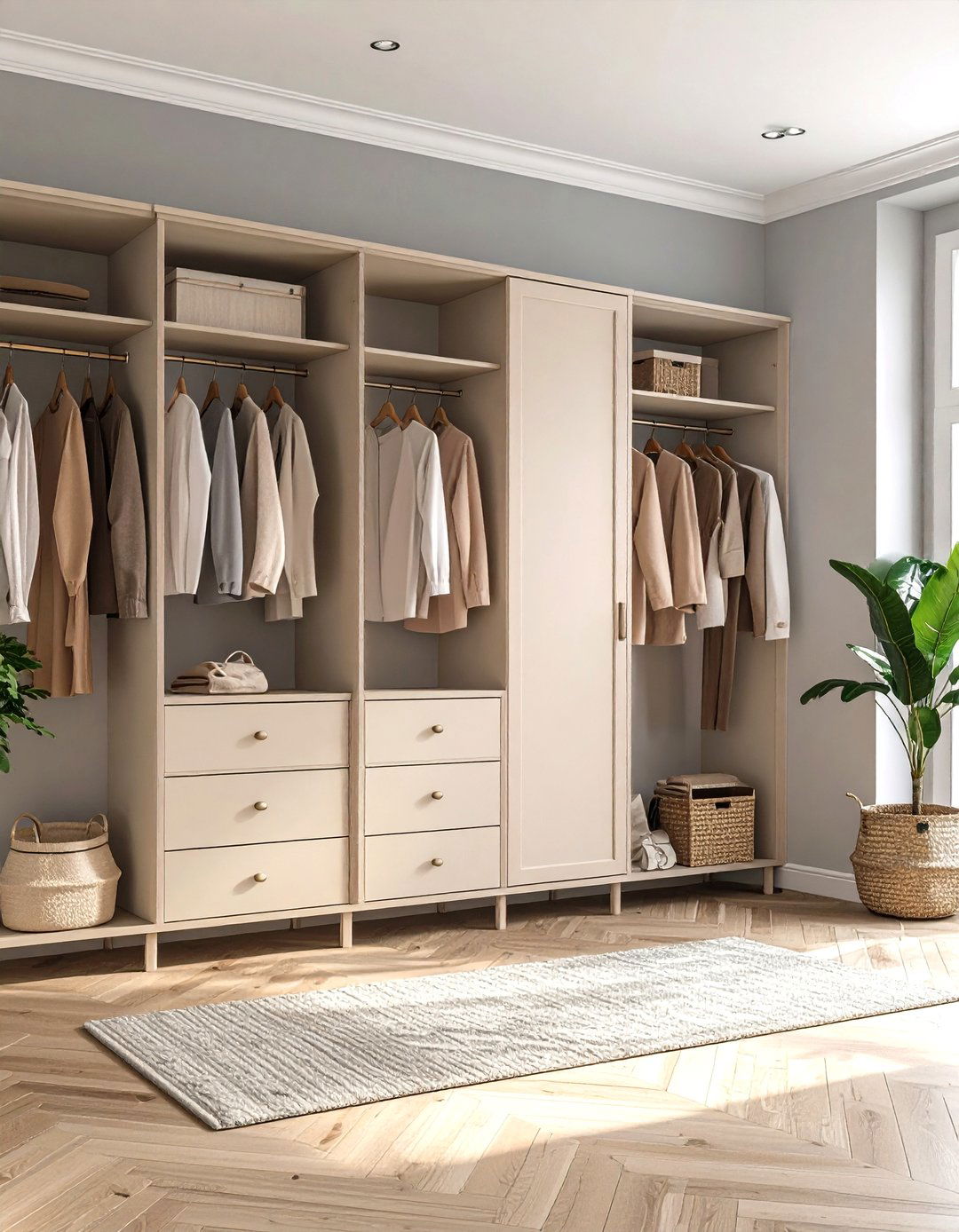
Light, neutral color palettes are a well-known trick to make a small dressing room feel more spacious and airy. Ideal Home’s recent project featured cream-colored cabinetry and soft gray walls to leverage natural light and minimize visual weight in the room. House & Garden experts further recommend pastel hues—such as soft blush, sage, or pale blue—to introduce subtle personality without overwhelming the senses. Painting trim and built-ins the same shade as the walls helps conceal seams and transitions, creating an uninterrupted visual plane. Complement lighter shades with warm metallic hardware to add depth and sophistication.
11. Integrate Statement Lighting
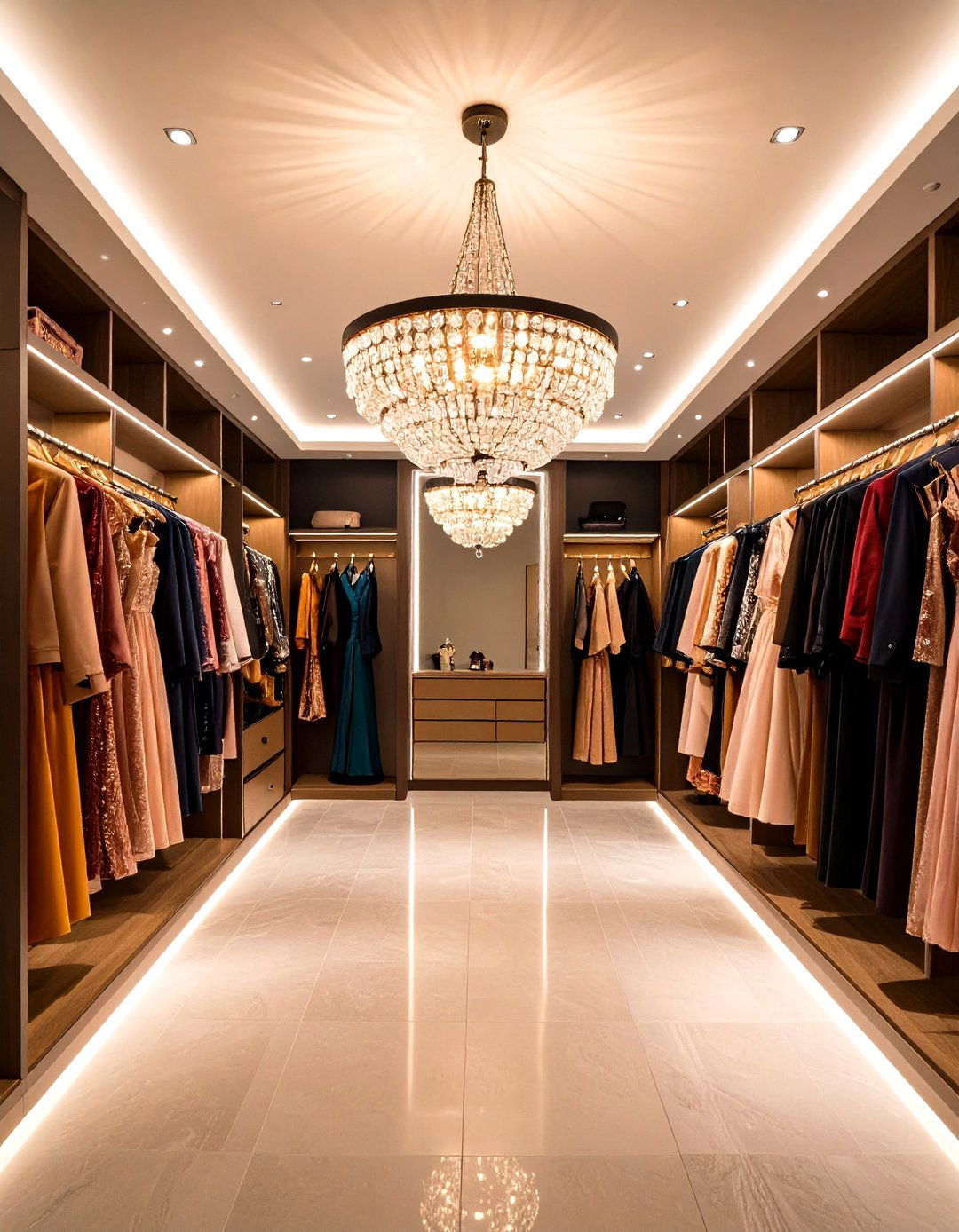
Strategic lighting transforms a small dressing room from merely functional to beautifully illuminated. Chandeliers, pendant lights, and wall sconces serve as both decorative accents and task lighting sources. The Spruce highlights that a statement chandelier centered in the room can draw the eye upward, emphasizing ceiling height. Integrated LED strips under shelves and inside cabinets ensure visibility of clothing and accessories. For makeup and grooming areas, adjustable vanity lighting on either side of the mirror provides shadow-free illumination. Layering ambient, task, and accent lighting zones creates depth and allows for mood adjustments.
12. Central Island or Counter

A narrow center island or countertop can offer additional storage while anchoring the layout of a small dressing room. The Spruce recommends slim-profile islands with built-in drawers for jewelry, watches, and small accessories. Pine or marble countertops enhance the luxury feel without overwhelming the space. An island can also double as a folding station or display surface for decorative trays. Positioning the island at the room’s midpoint creates defined circulation paths on either side. To maintain an open feel, consider islands with open leg spaces or partial shelves rather than closed cabinets.
13. Open Shelving Displays
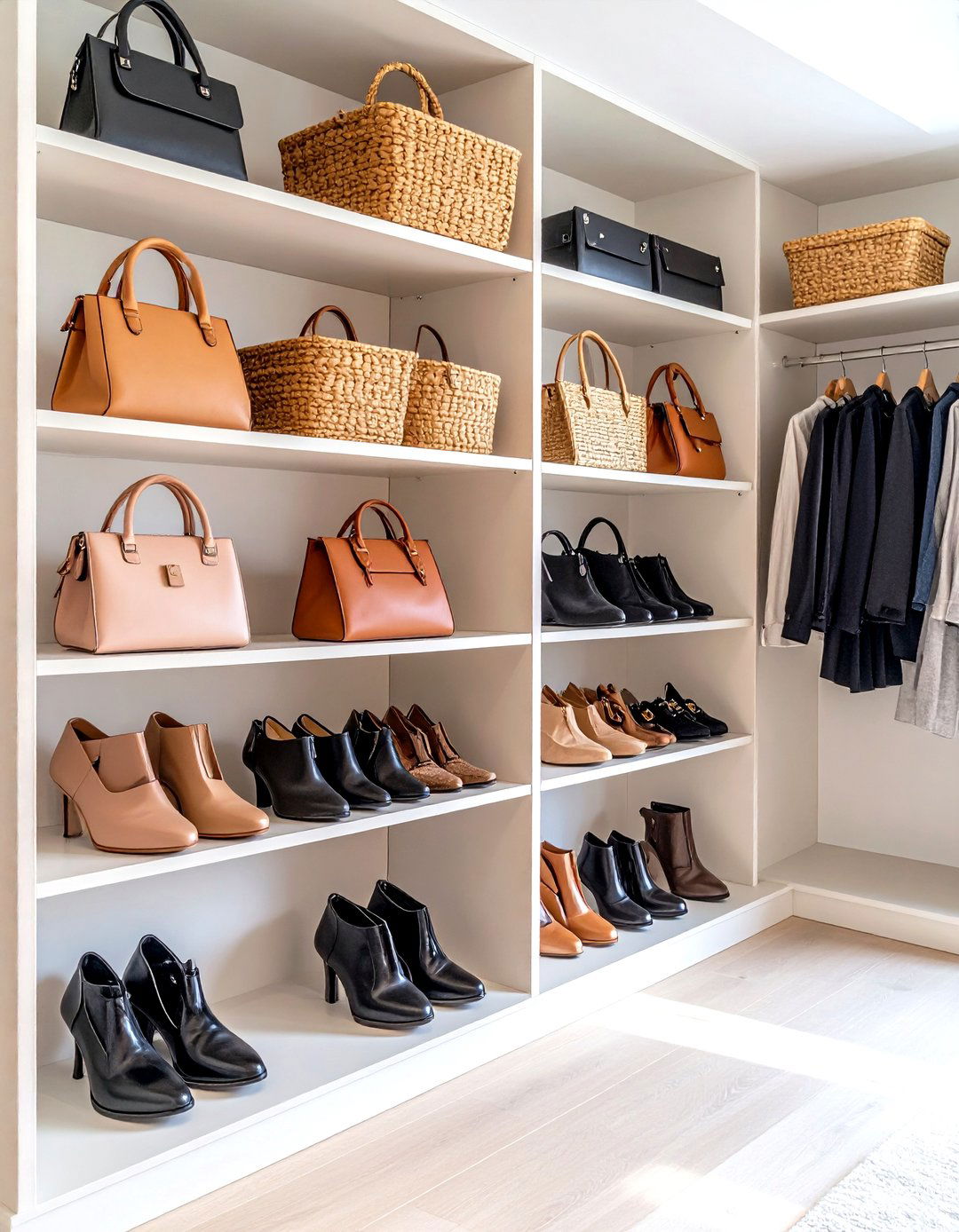
Open shelving units display curated accessories, shoes, and handbags while providing an airy alternative to closed cabinetry. House Beautiful suggests styling open shelves with coordinated storage boxes and baskets to keep smaller items organized. Alternating decorative elements with functional pieces—like vases or small art objects—helps strike a balance between display and storage. Floating or wall-mounted shelves free up floor area, and UV-resistant acrylic shelving can impart a modern, lightweight look. To avoid a cluttered appearance, limit each shelf to a handful of curated items and rotate displays seasonally.
14. Pull-Out Drawers and Bins
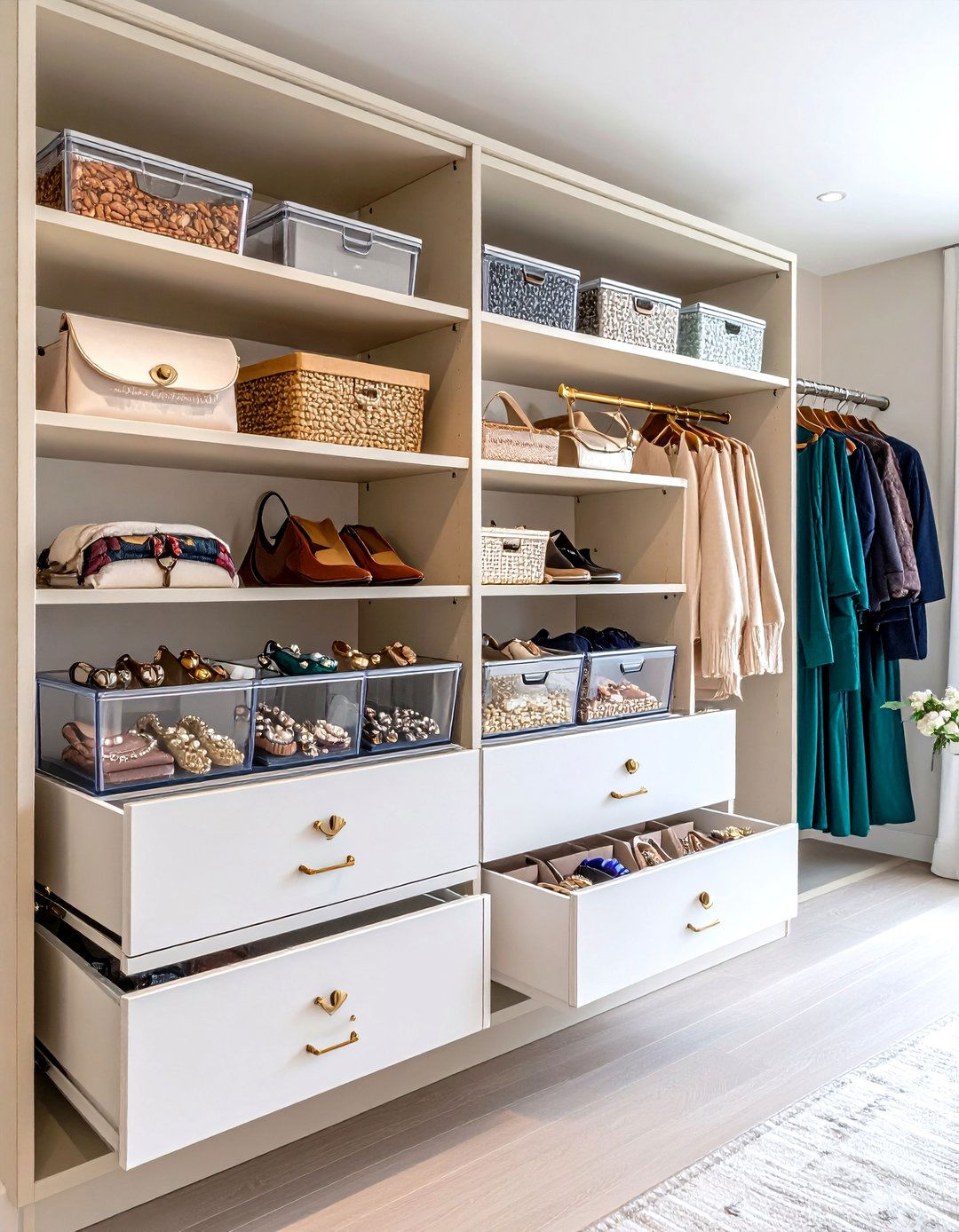
Pull-out drawers and sliding bins make it effortless to retrieve items from deep recesses without rummaging or straining. Real Homes emphasizes using clear acrylic or wire baskets for visibility and air circulation, especially for items like scarves or knitwear. Pull-out trouser racks and tie organizers streamline outfit selection, while deep drawers with adjustable dividers keep jewelry, belts, and small accessories tangle-free. Soft-close drawer glides prevent slamming and prolong hardware life. Installing drawers behind decorative façades maintains a sleek exterior while delivering customized internal storage.
15. Use Hooks and Pegboards
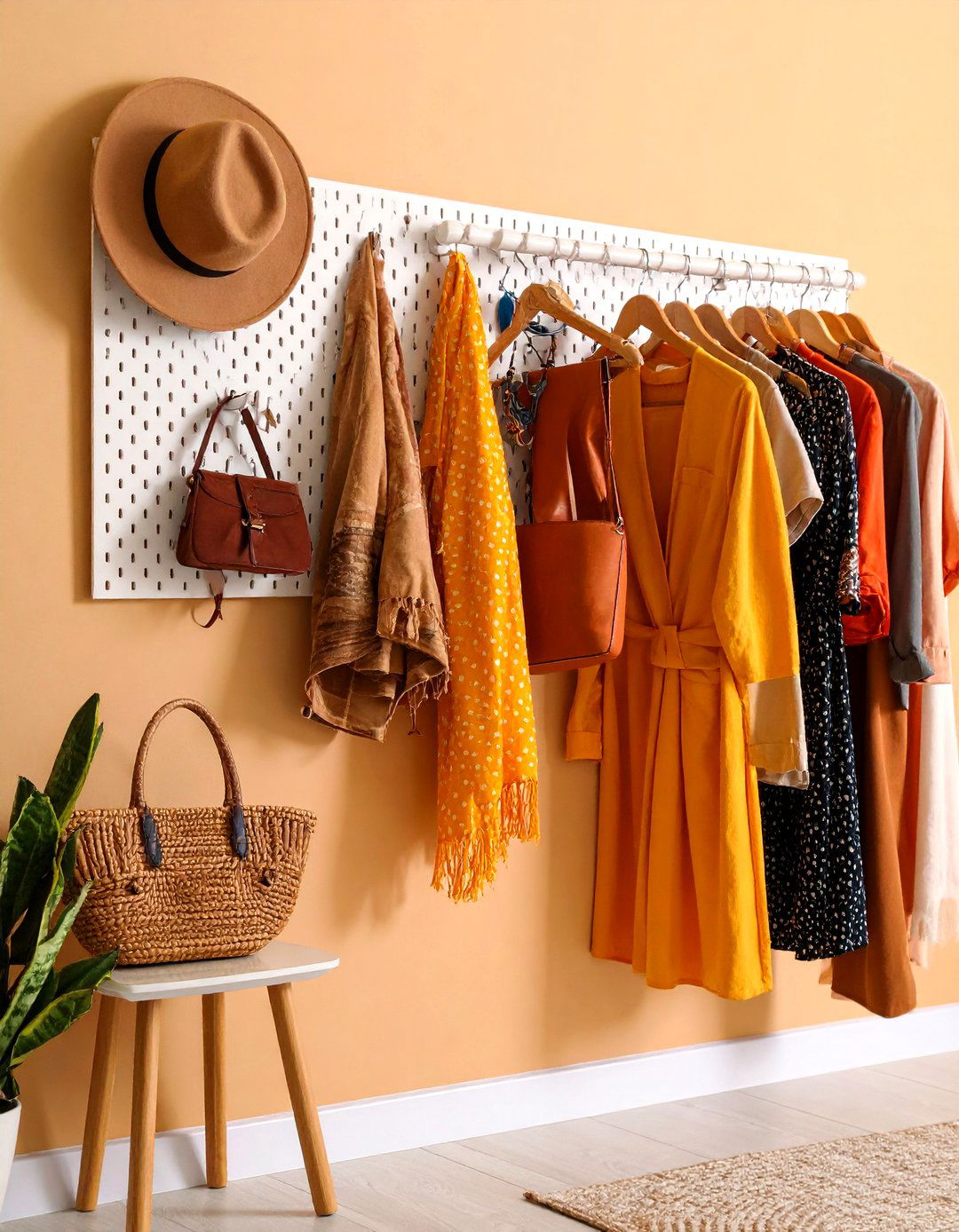
Wall hooks and pegboards are economical yet highly functional additions for hanging hats, bags, scarves, and jewelry. The Spruce recommends a decorative pegboard with adjustable pegs and trays to configure storage according to project size. Hooks installed at varying heights accommodate long scarves, belts, and necklaces without tangling. A pegboard can serve as a backdrop to a vanity or mirror, offering accessible hanging storage for frequently used items. Magnetic strips also work well for small metal accessories like brooches or hairpins. This versatile system adapts easily as storage needs change over time.
16. Install Floating Shelves
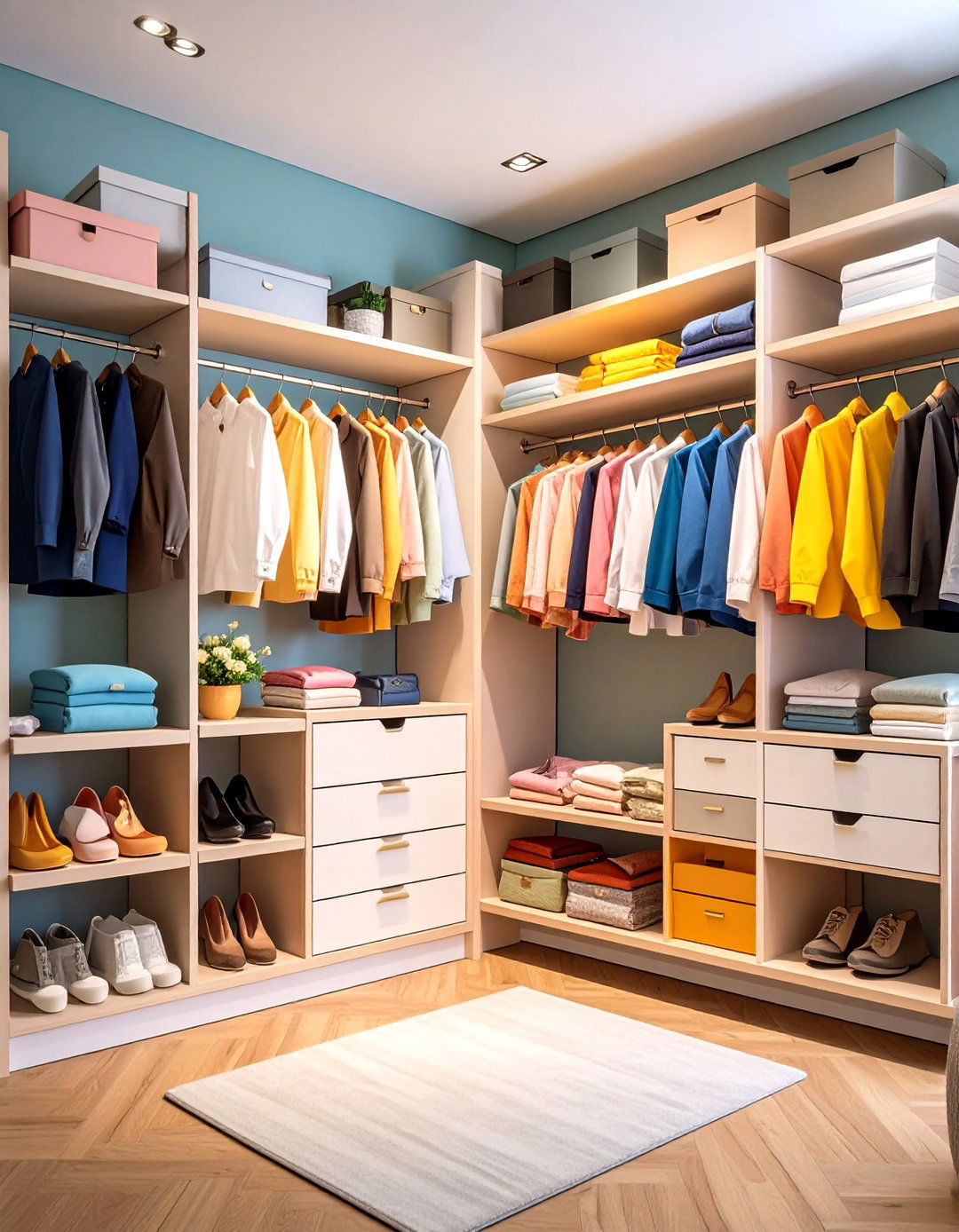
Floating shelves create visual openness by eliminating bulky side panels and support columns. Architectural Digest showcases floating shelves finished in matching wall paint to blend seamlessly into the background, giving the illusion of items levitating against the wall. These sleek platforms are ideal for folded garments, organized baskets, or display boxes. They can be staggered at different heights to accommodate taller pieces like boots or designer bags. Floating shelves are relatively simple to install and can be cut to custom lengths, making them a budget-friendly DIY solution.
17. Incorporate Fold-Away Furniture
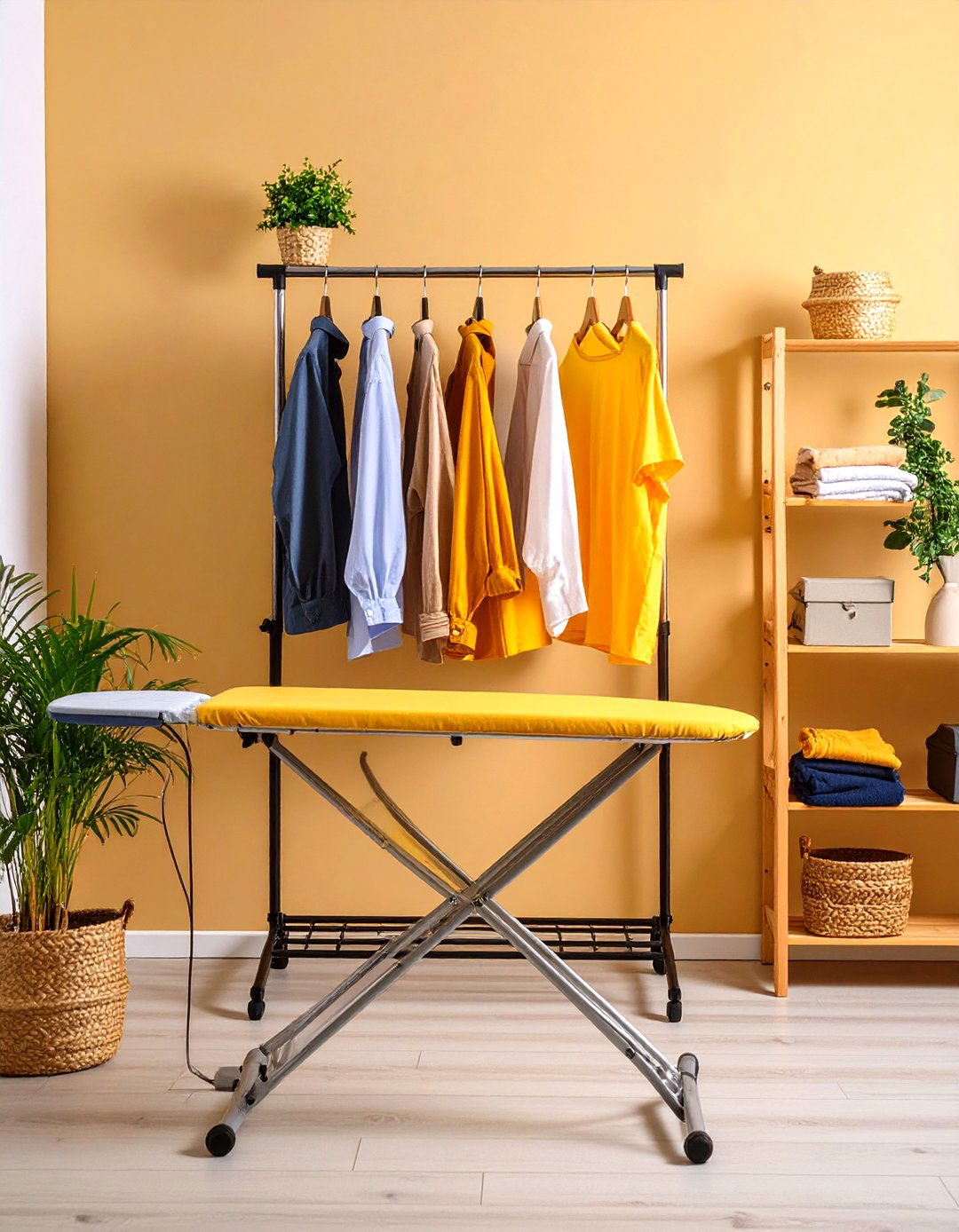
Fold-away furniture, such as retractable ironing boards and collapsible garment racks, provides occasional functionality without permanent floor coverage. House Beautiful’s experts highlight Murphy-style ironing boards that fold neatly into wall cabinets, freeing up floor space when not in use. A fold-down wall-mounted table can serve as a temporary workspace for outfit planning or gift wrapping. Portable garment racks with wheels allow you to move clothing out of the main dressing area during styling sessions and then tuck them out of sight. This flexibility ensures the room remains adaptable to various daily activities.
18. Use Transparent Storage Solutions
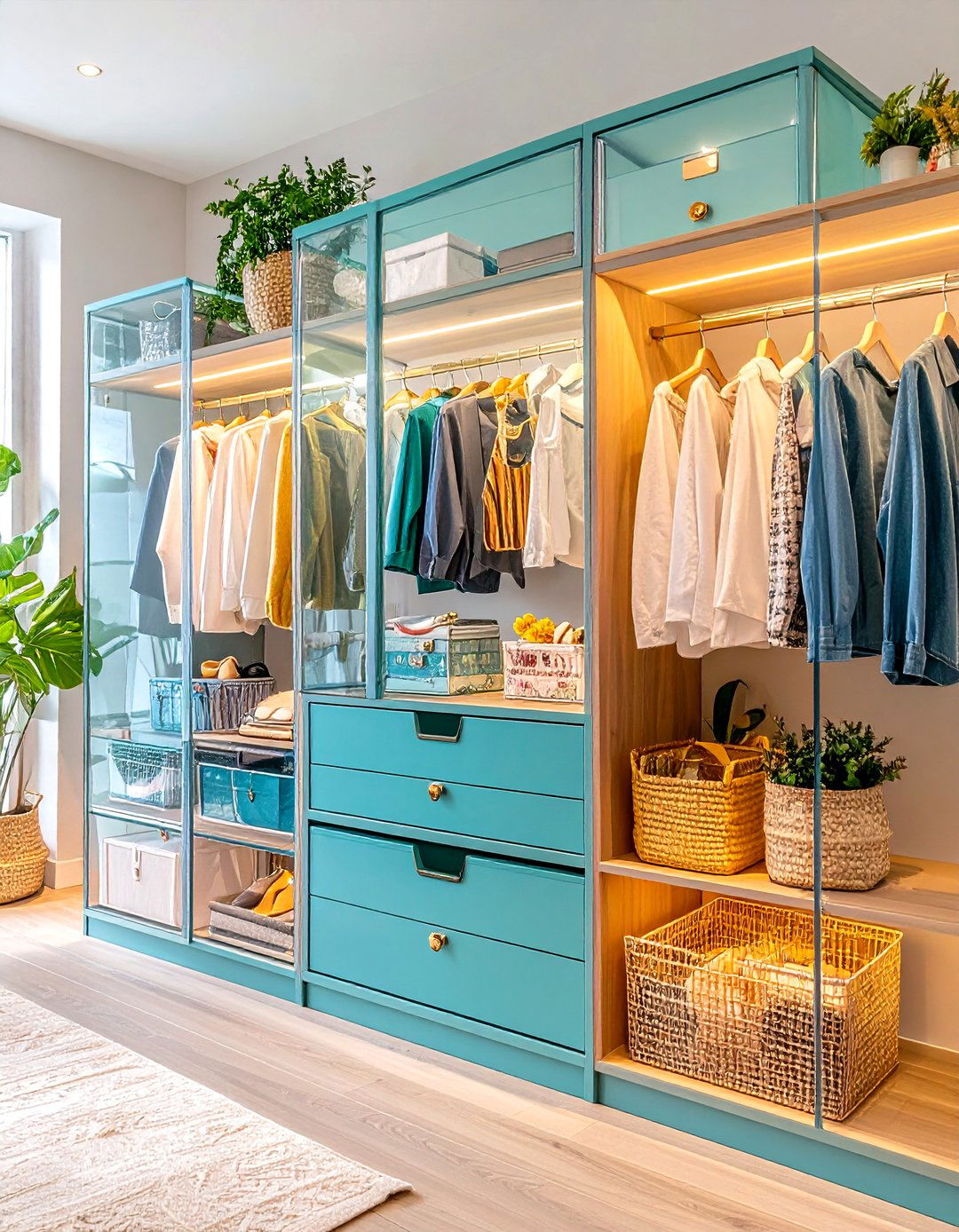
Transparent storage solutions, like clear acrylic drawers and bins, maintain a light, airy aesthetic while keeping items easily visible. Better Homes & Gardens recommends incorporating acrylic drawer inserts and portable clear boxes for makeup, jewelry, and specialty accessories. Wire mesh drawers also offer transparency and ventilation—ideal for shoes and handbags that benefit from airflow. Clear storage minimizes visual bulk and helps prevent you from forgetting items tucked away in opaque containers. For a modern gallery-like effect, consider floor-to-ceiling acrylic boxes as shelving units, showcasing your collection as a curated display.
19. Personalize with Wallpaper or Accent Walls
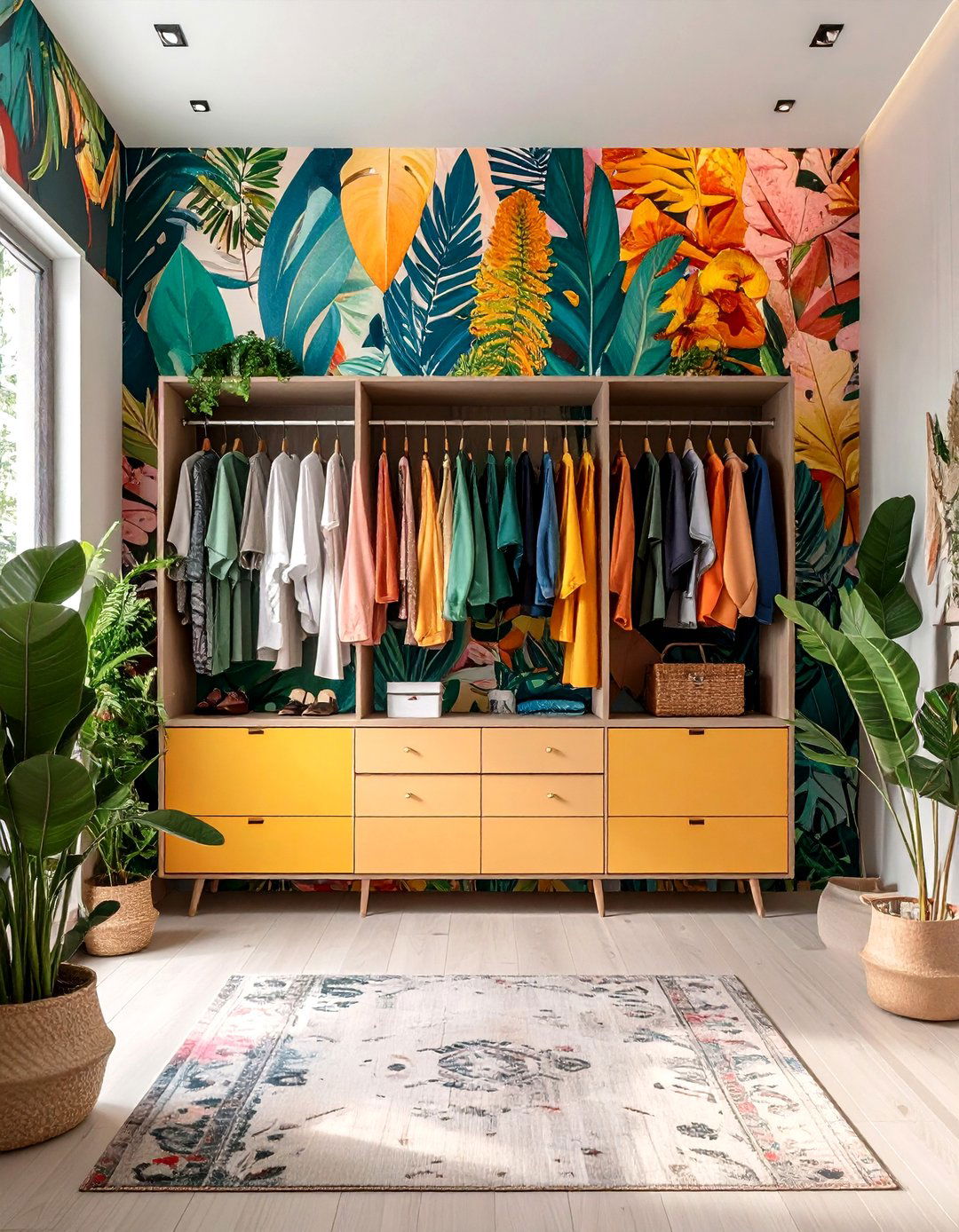
Adding wallpaper or a bold accent wall injects personality and depth into a small dressing room, making it feel bespoke and inspiring. Architectural Digest features dramatic scenic wallpapers, such as 18th-century-inspired murals or nature-themed prints, to create an enveloping backdrop. Peel-and-stick wallpaper is a renter-friendly option that can be replaced seasonally or when tastes change. For a subtler look, paint one wall in a contrasting hue—like charcoal gray, emerald green, or soft blush—to highlight cabinetry and shelving. Combining accent walls with coordinating textiles elevates the overall design coherence.
20. Integrate Seating Elements
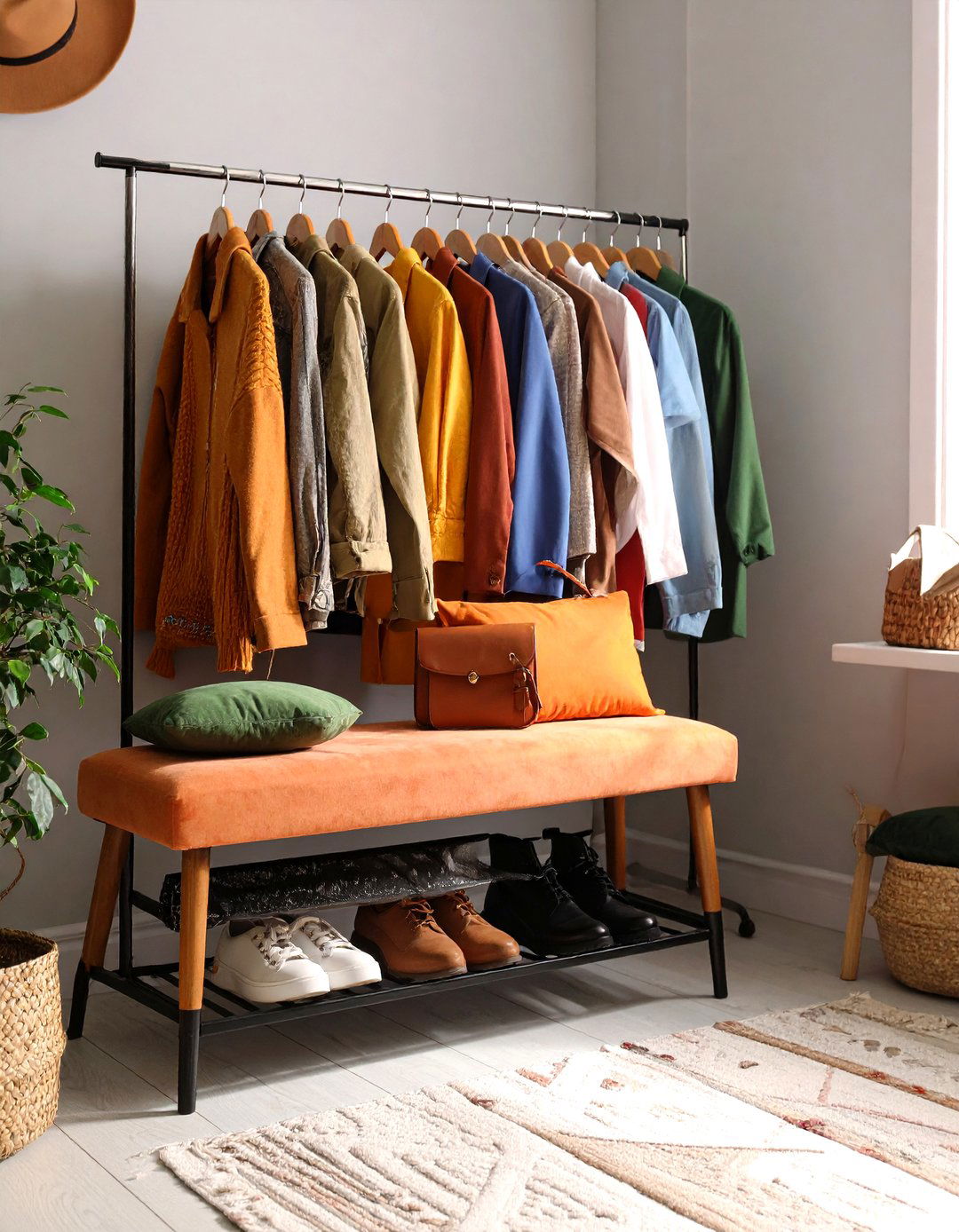
A comfortable seating element is crucial in a dressing room for ease of putting on shoes, planning outfits, and taking breaks during styling sessions. HGTV highlights petite upholstered benches with under-seat storage compartments that double as a shoe bench and seating solution. For extremely tight spaces, a fold-down wall-mounted stool can provide seating without permanent floor footprint. Consider stools with swivel tops or built-in hooks for bags and scarves. Upholstery in durable fabrics, like performance velvet or treated linens, ensures longevity and easy cleaning. Position seating near natural light or a mirror to create a practical grooming nook.
Conclusion:
Incorporating these twenty small dressing room ideas can transform even the most modest space into an organized, stylish, and efficient wardrobe retreat. From maximizing vertical storage and conducting a thorough closet audit to selecting multi-functional furniture and adding decorative accents, each strategy plays a vital role in optimizing every square inch. Tailoring solutions—such as custom closet systems, fold-away features, and strategic lighting—ensures the room meets both aesthetic and functional demands. By combining practical storage hacks with thoughtful design details like statement lighting, accent walls, and seating, you can create a dressing room that not only accommodates your belongings but also inspires daily confidence and ease of use. Embrace these concepts to elevate your small dressing room into a personalized sanctuary.



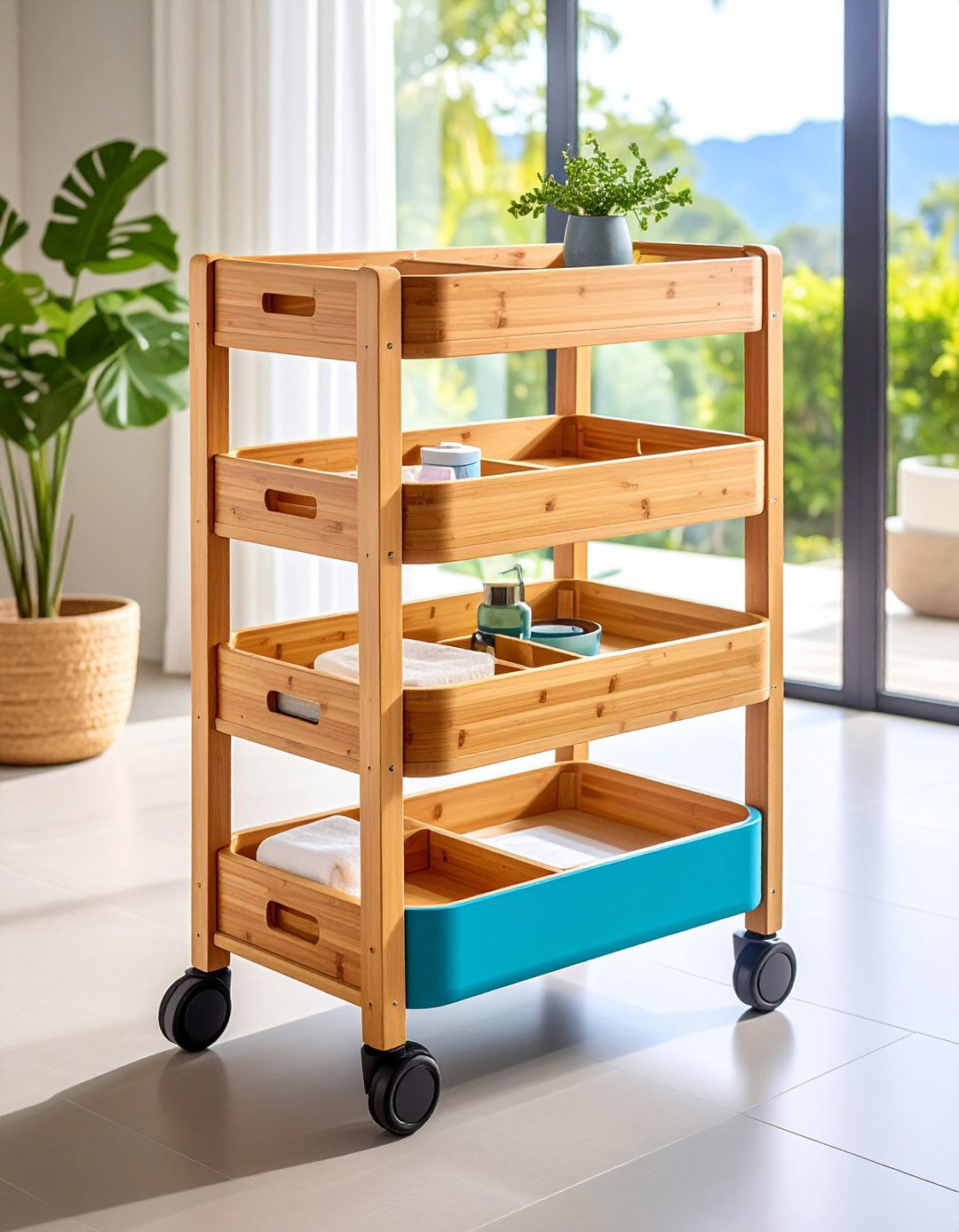


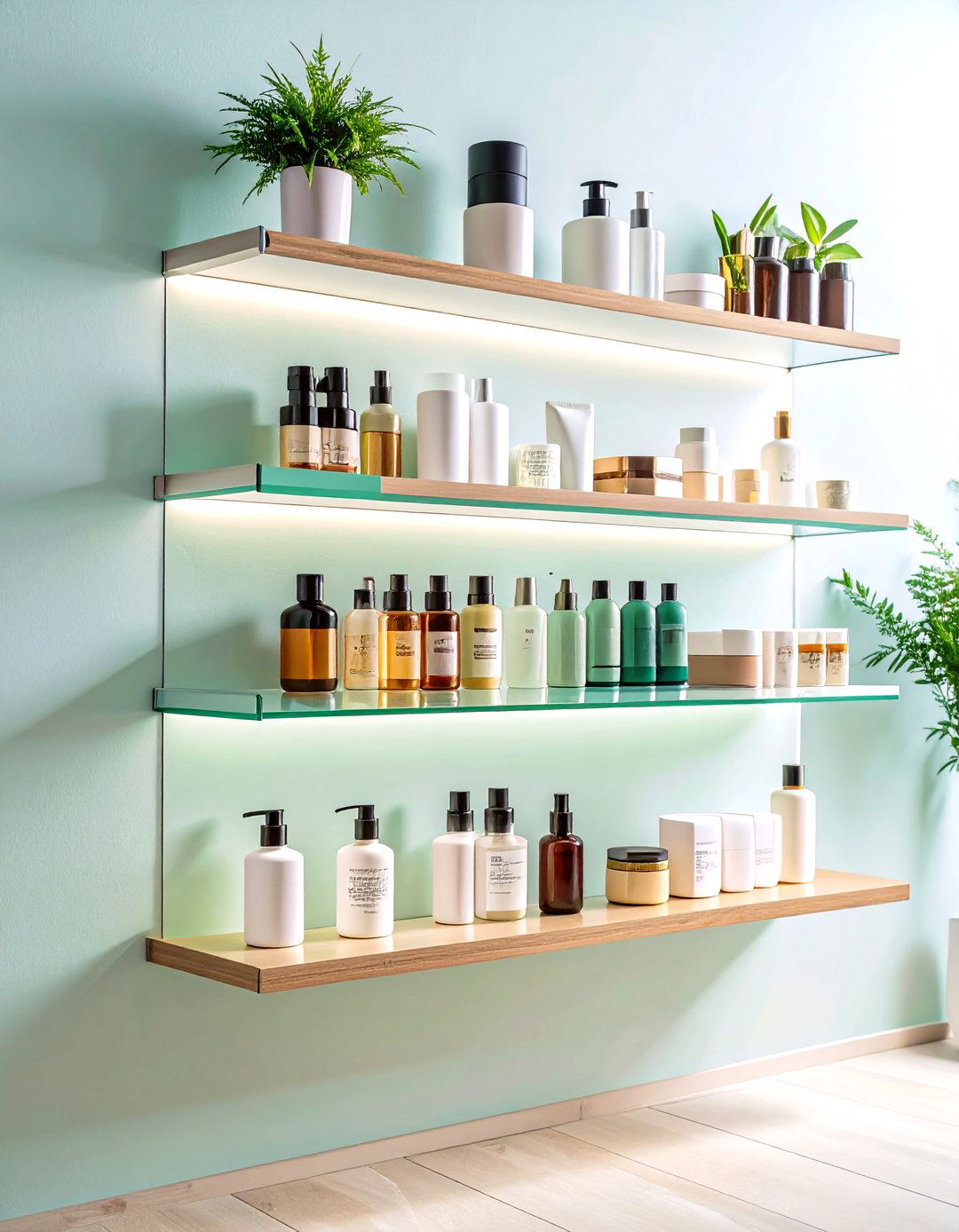
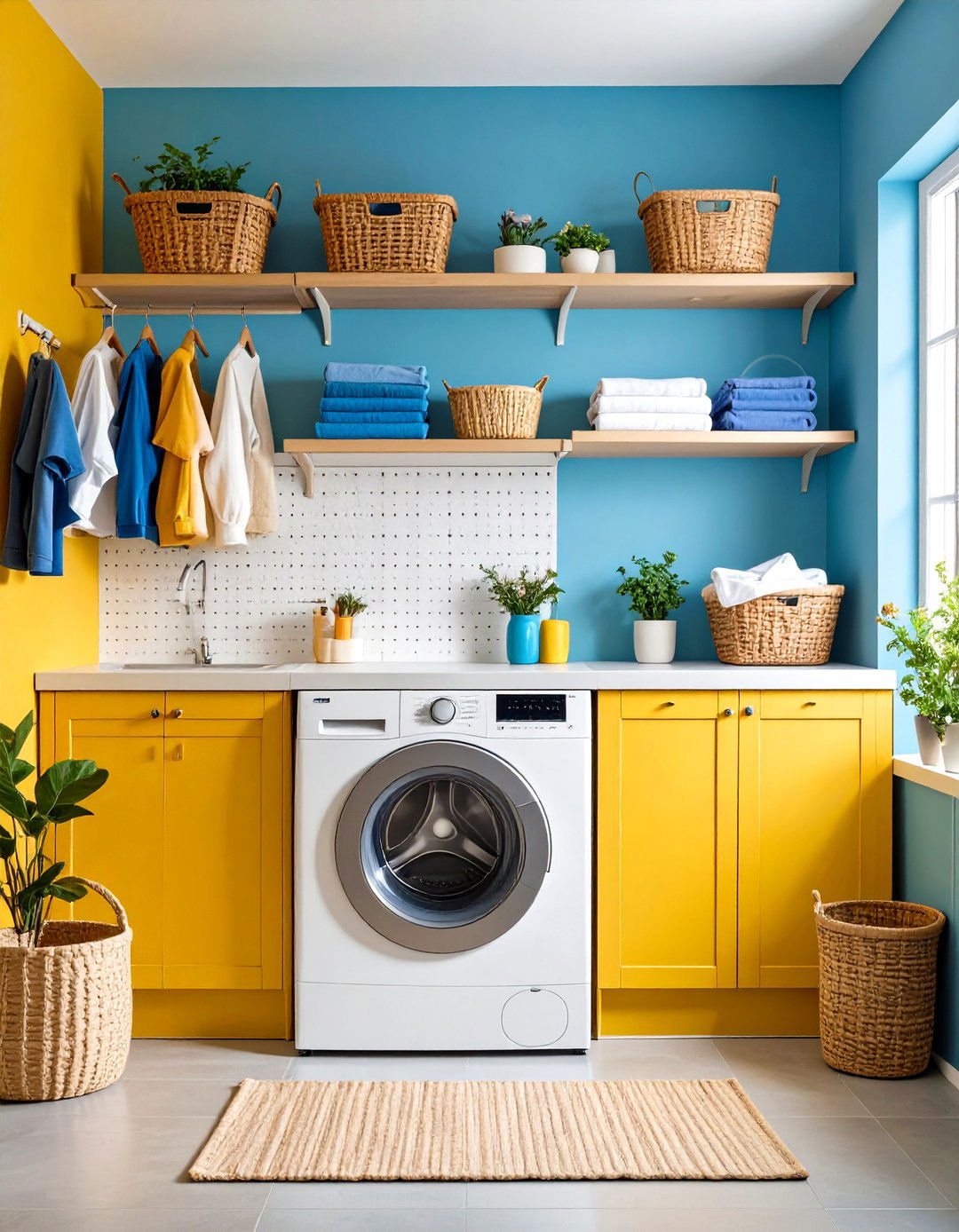
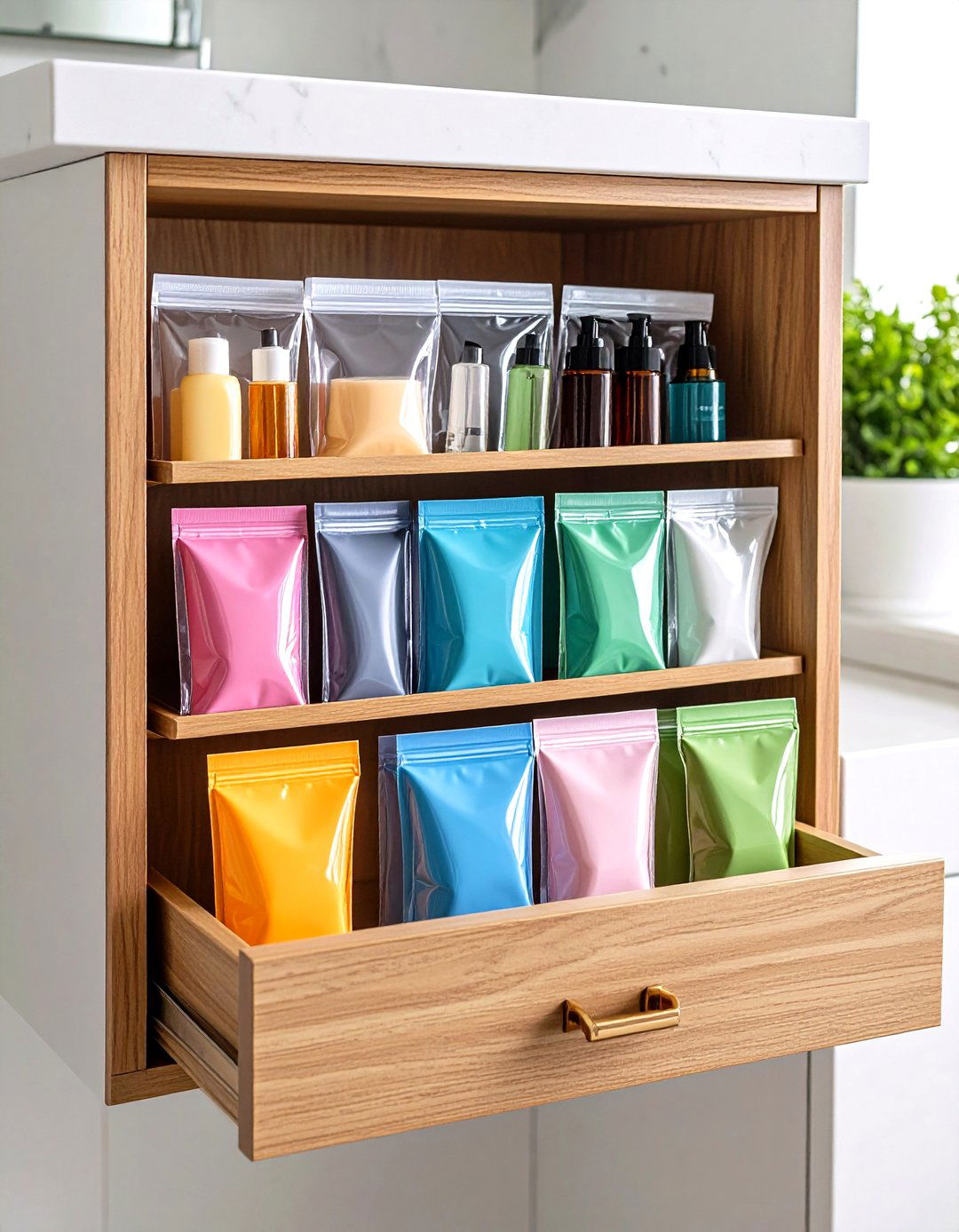

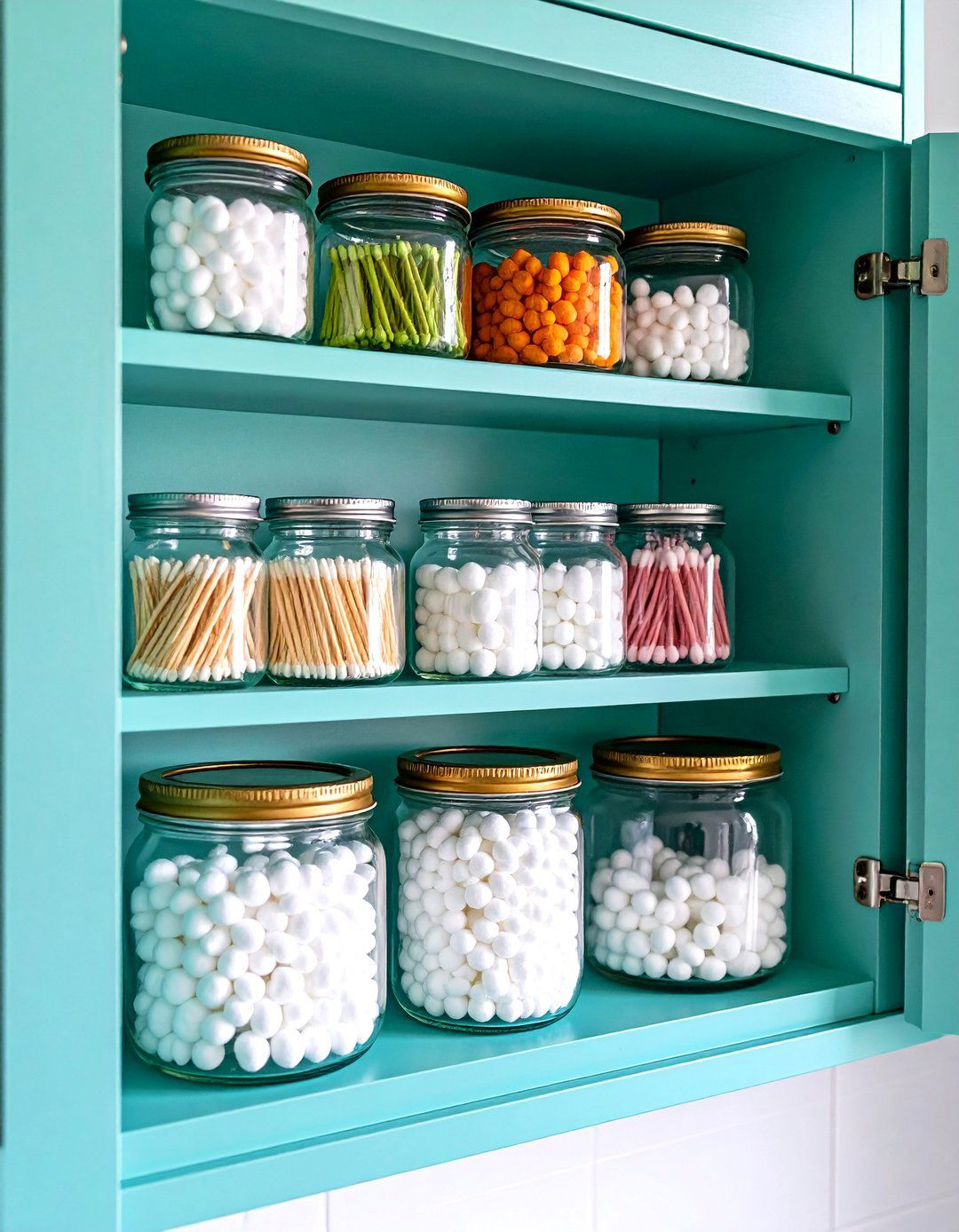
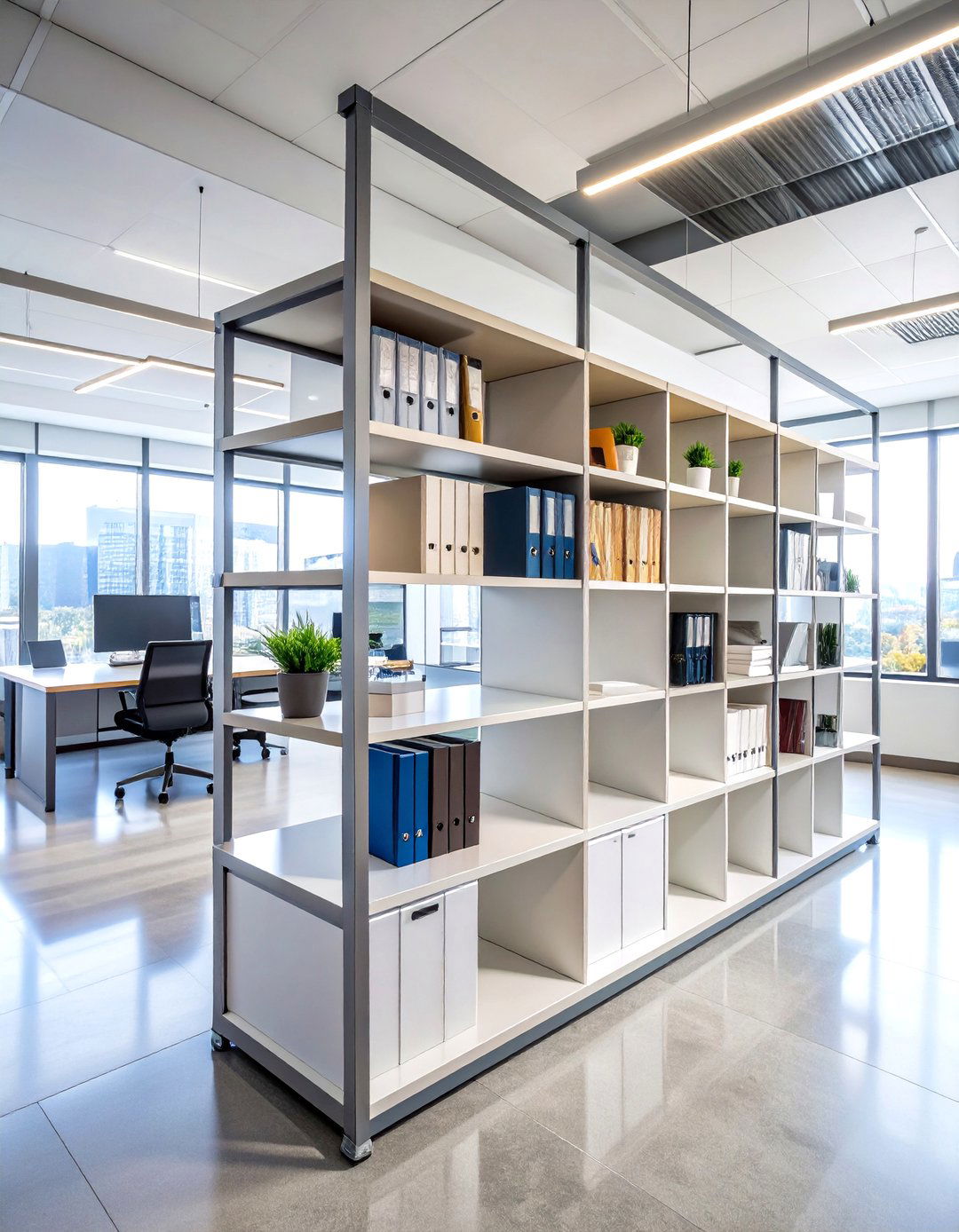
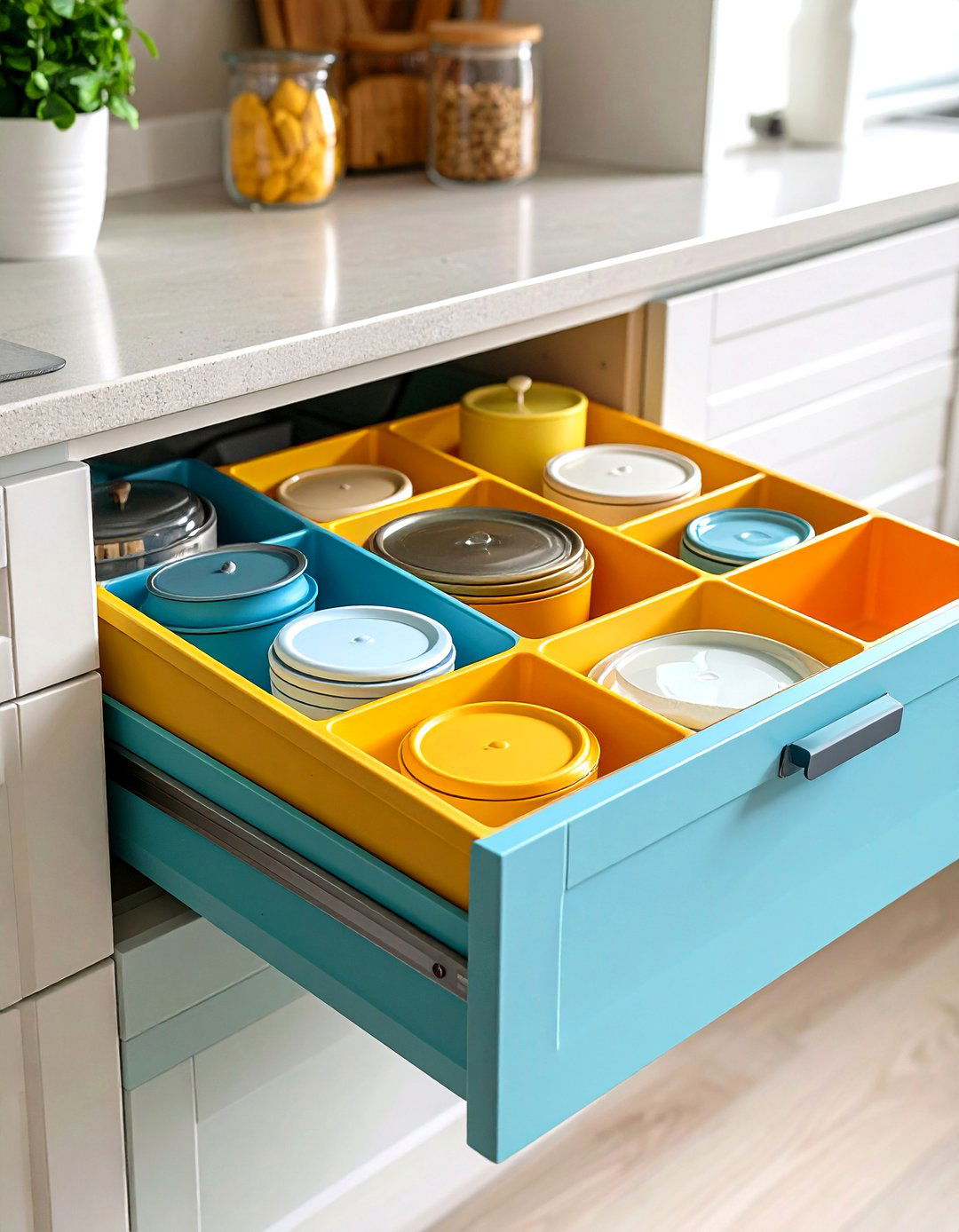
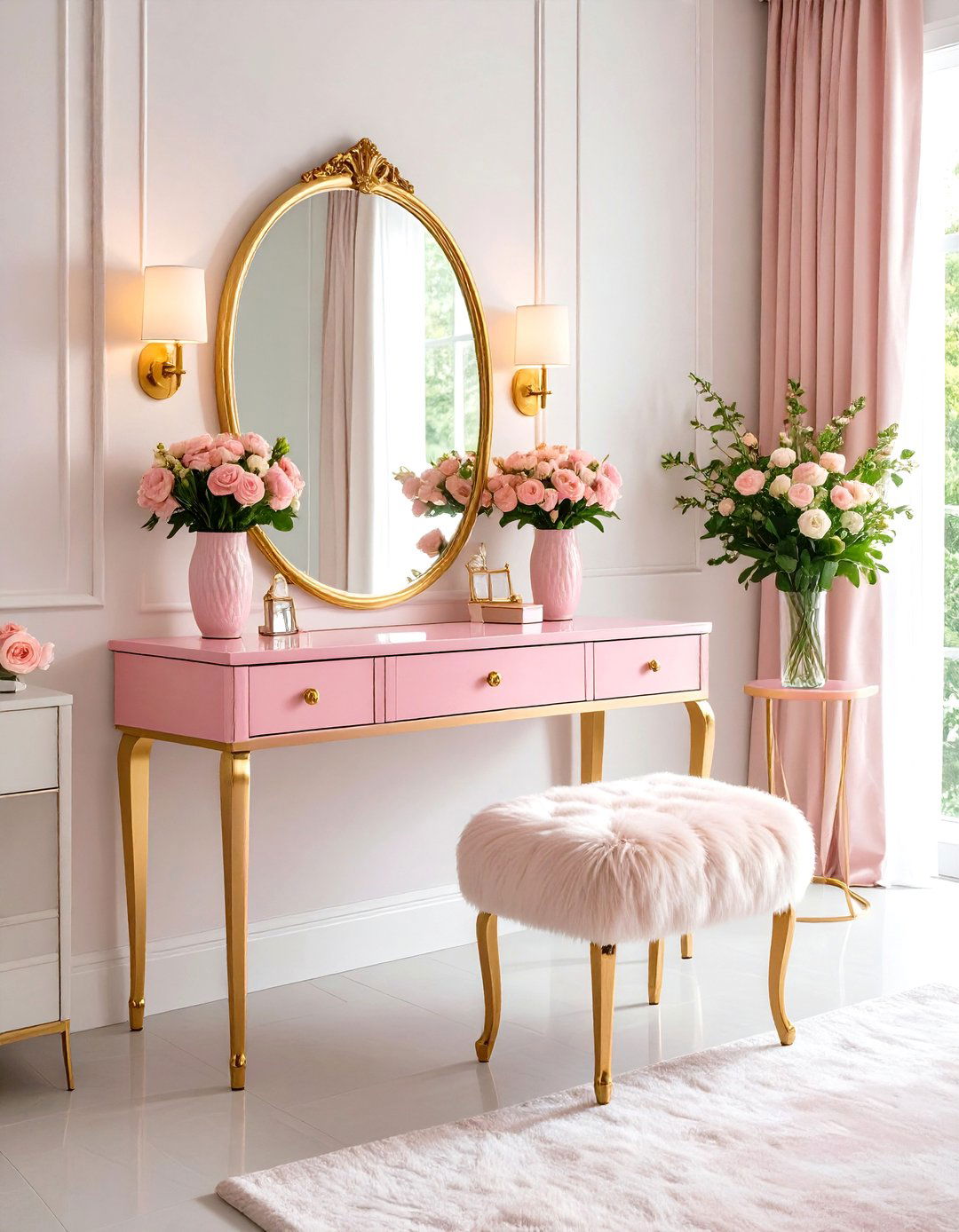
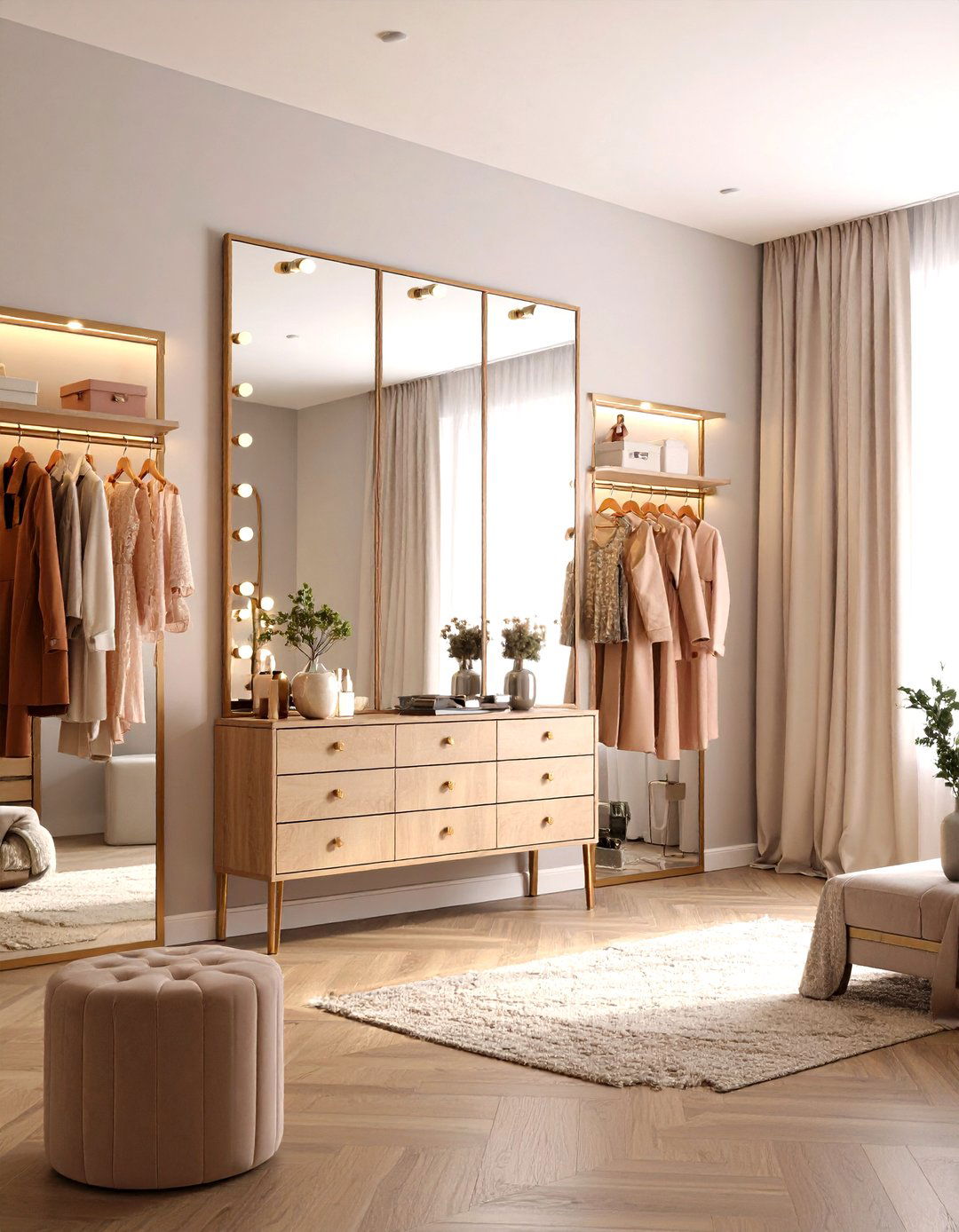
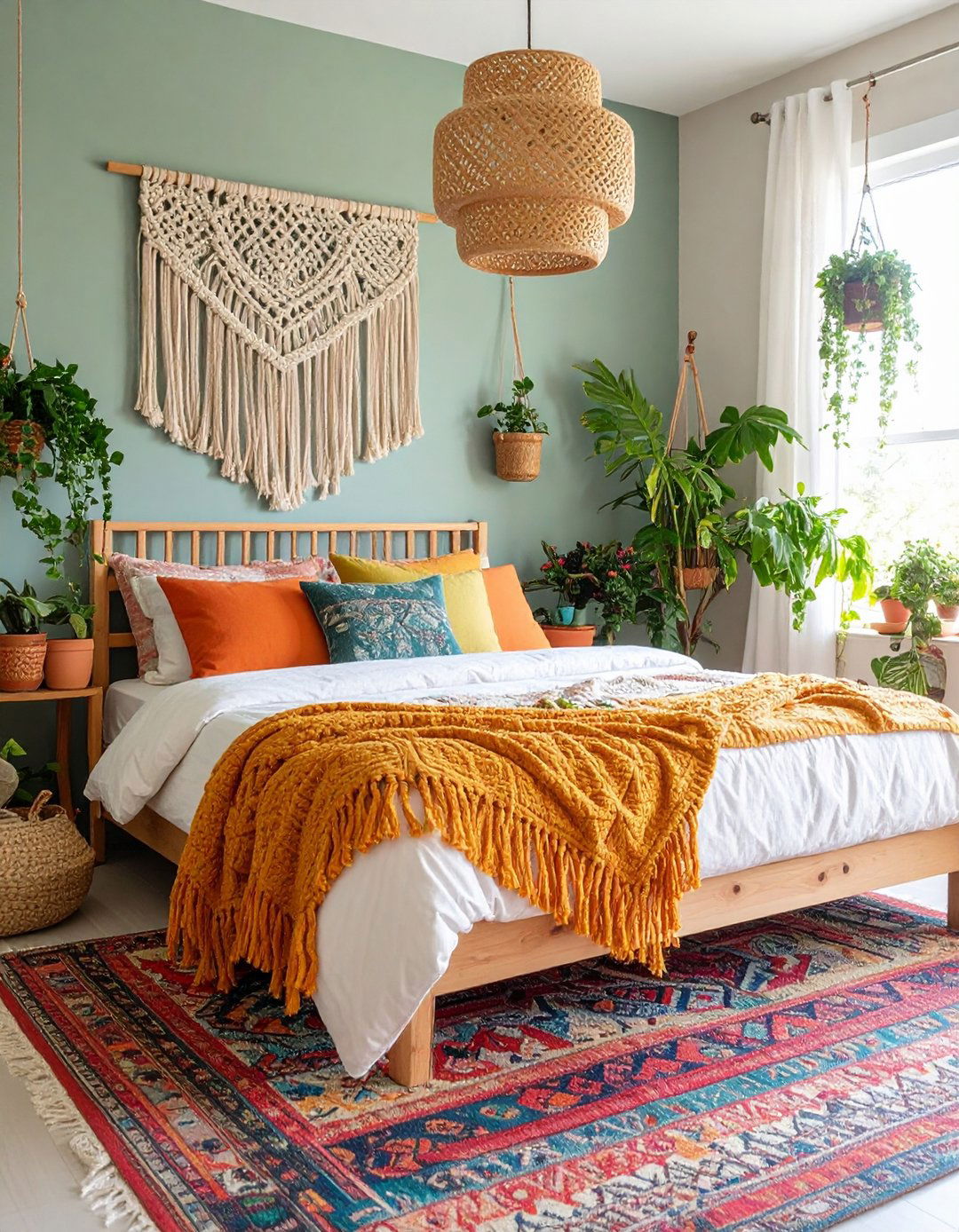
Leave a Reply